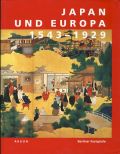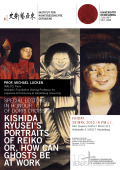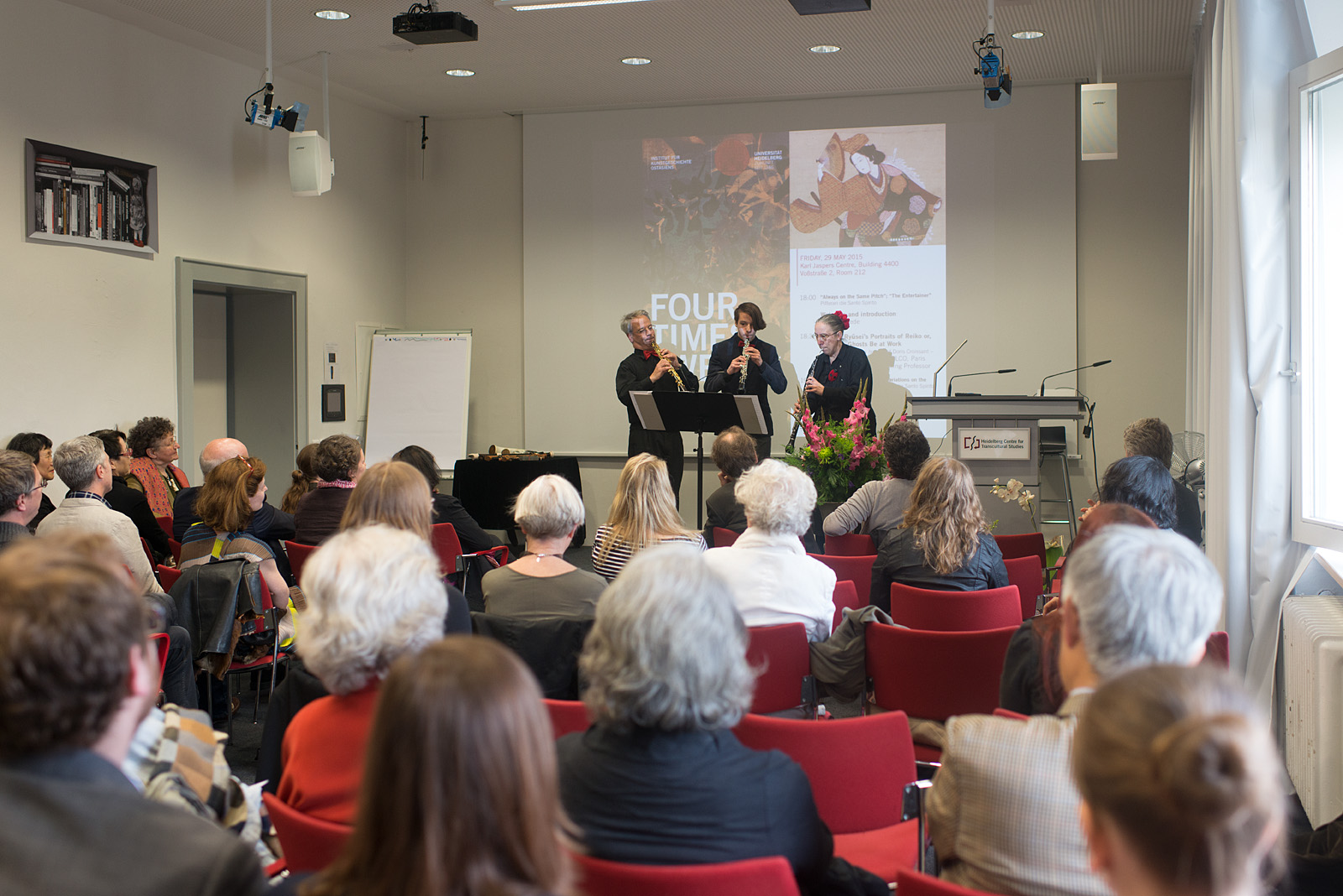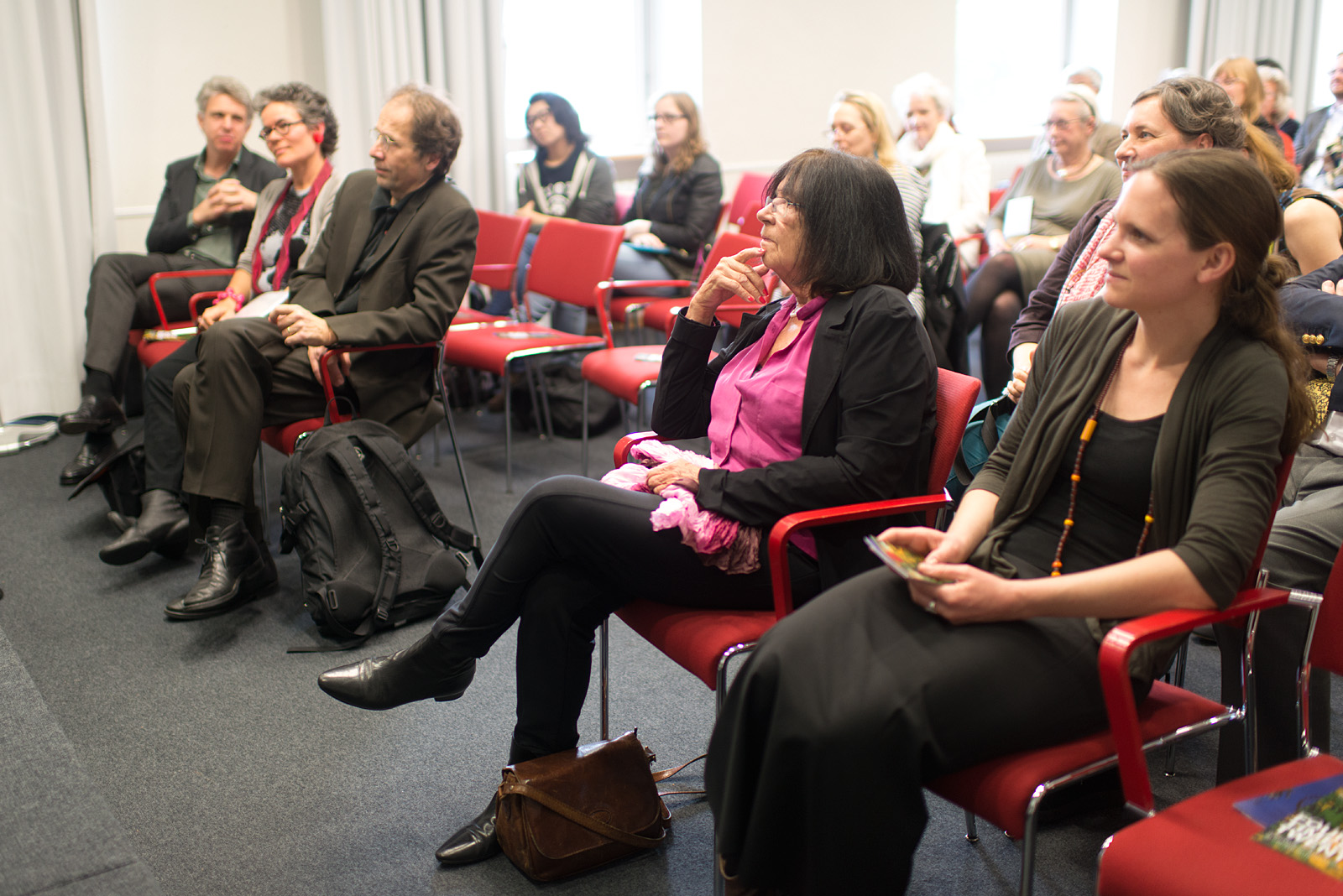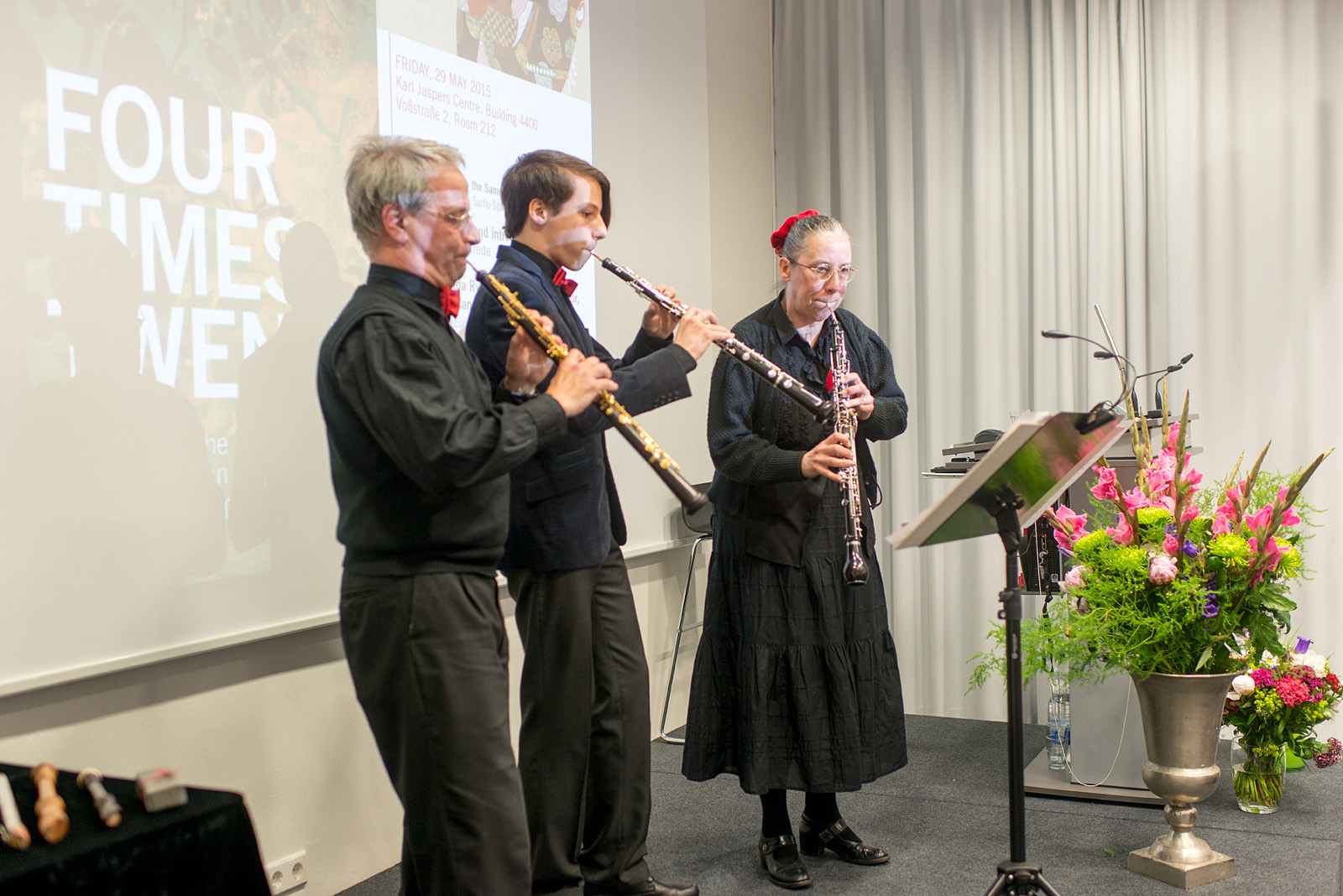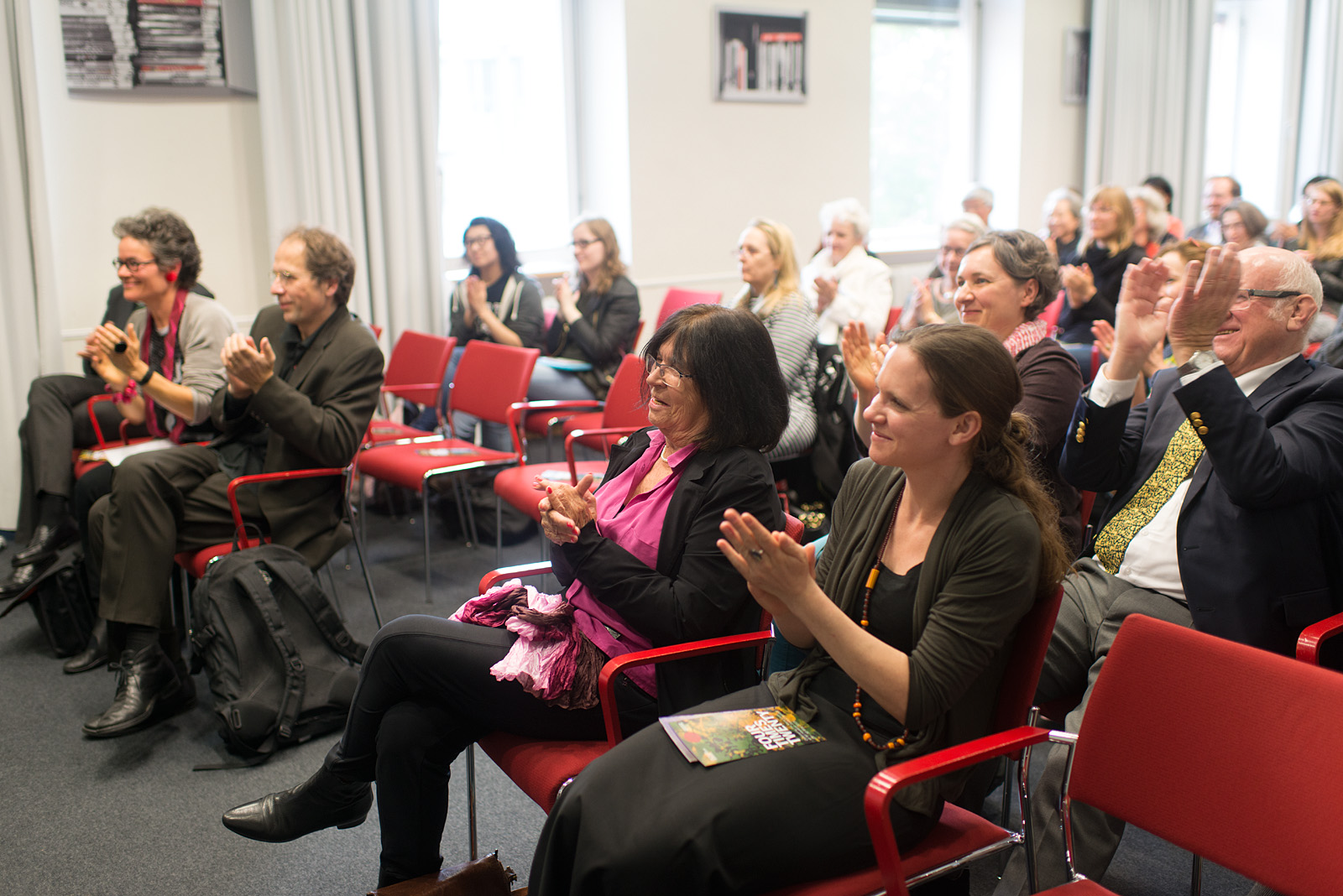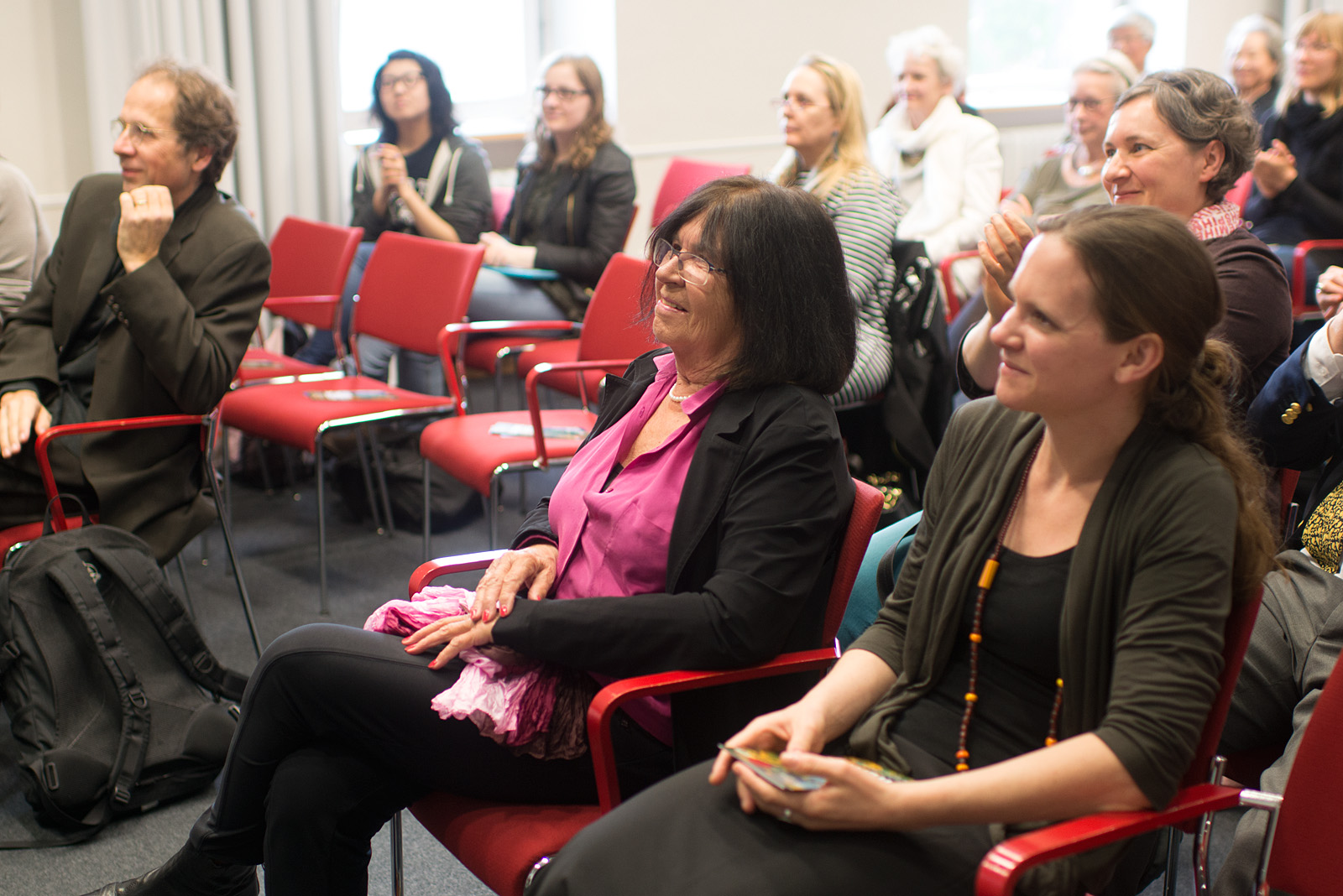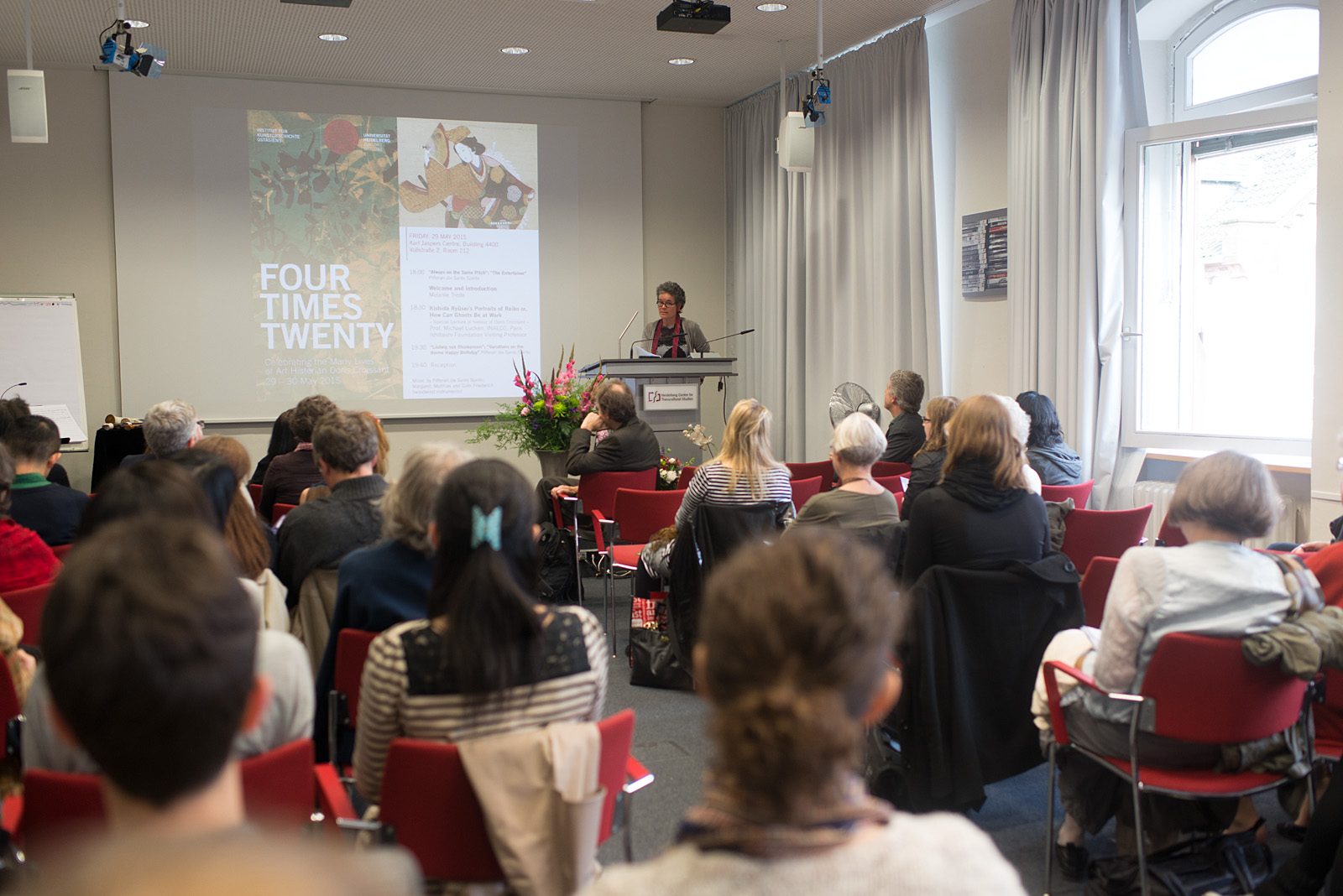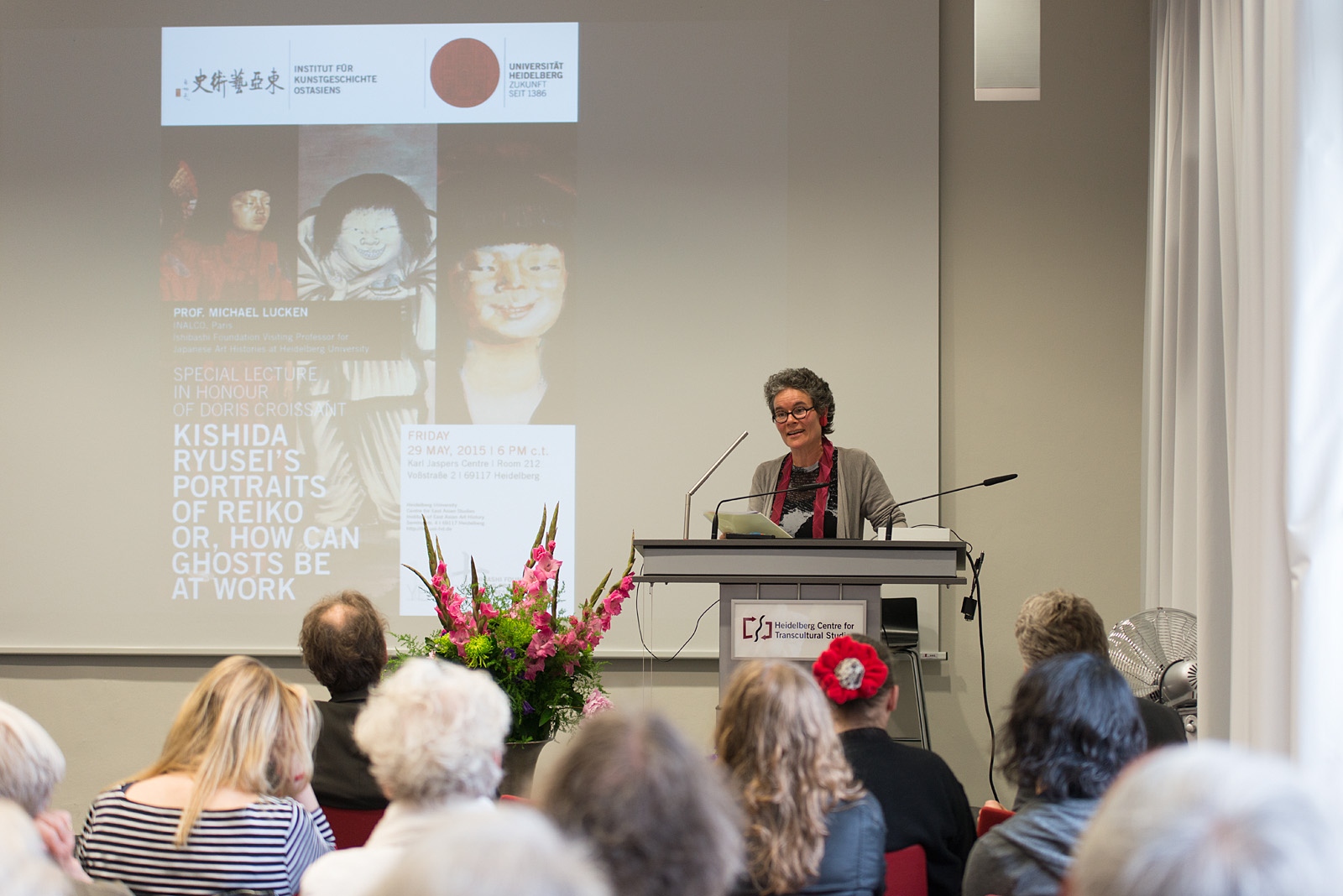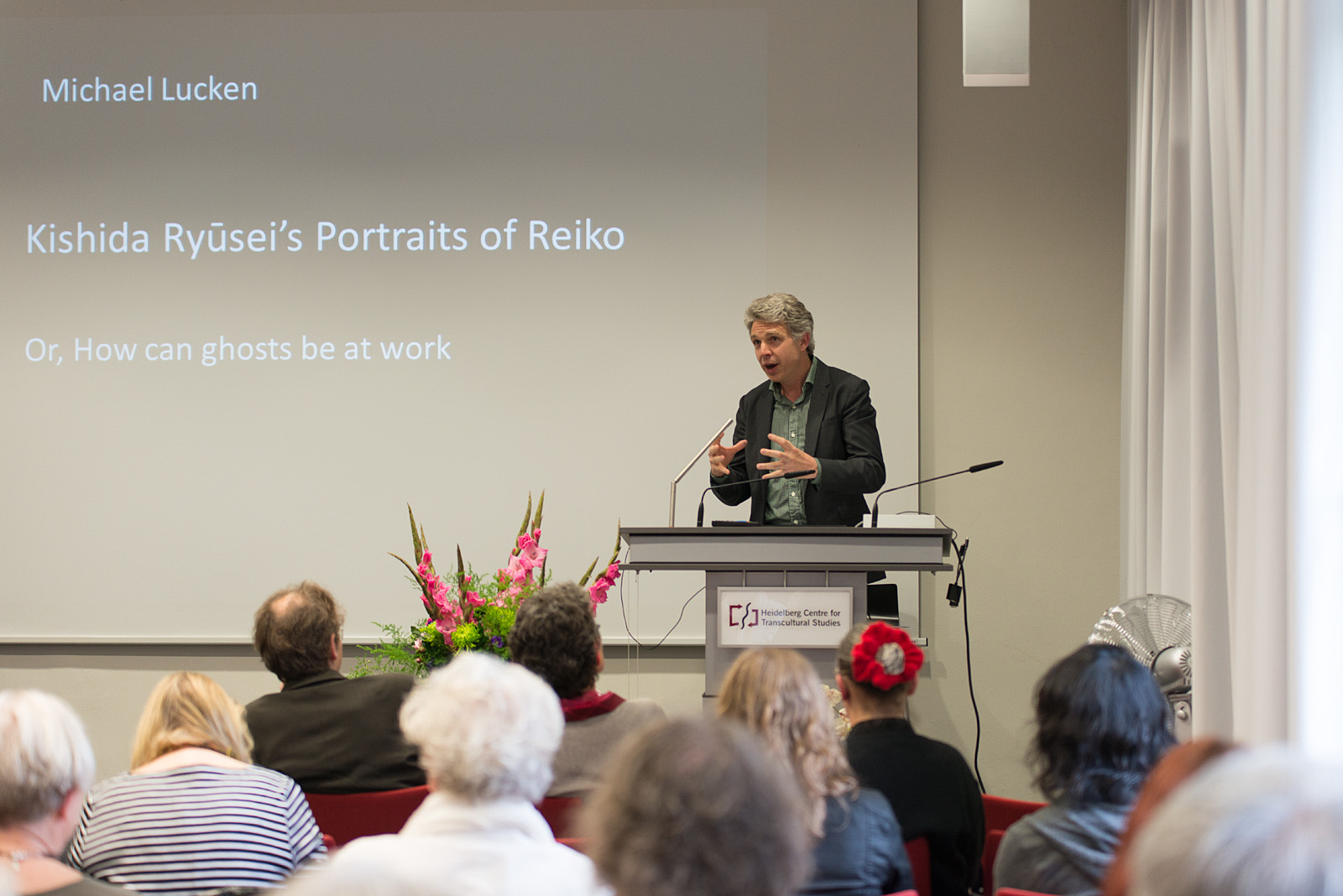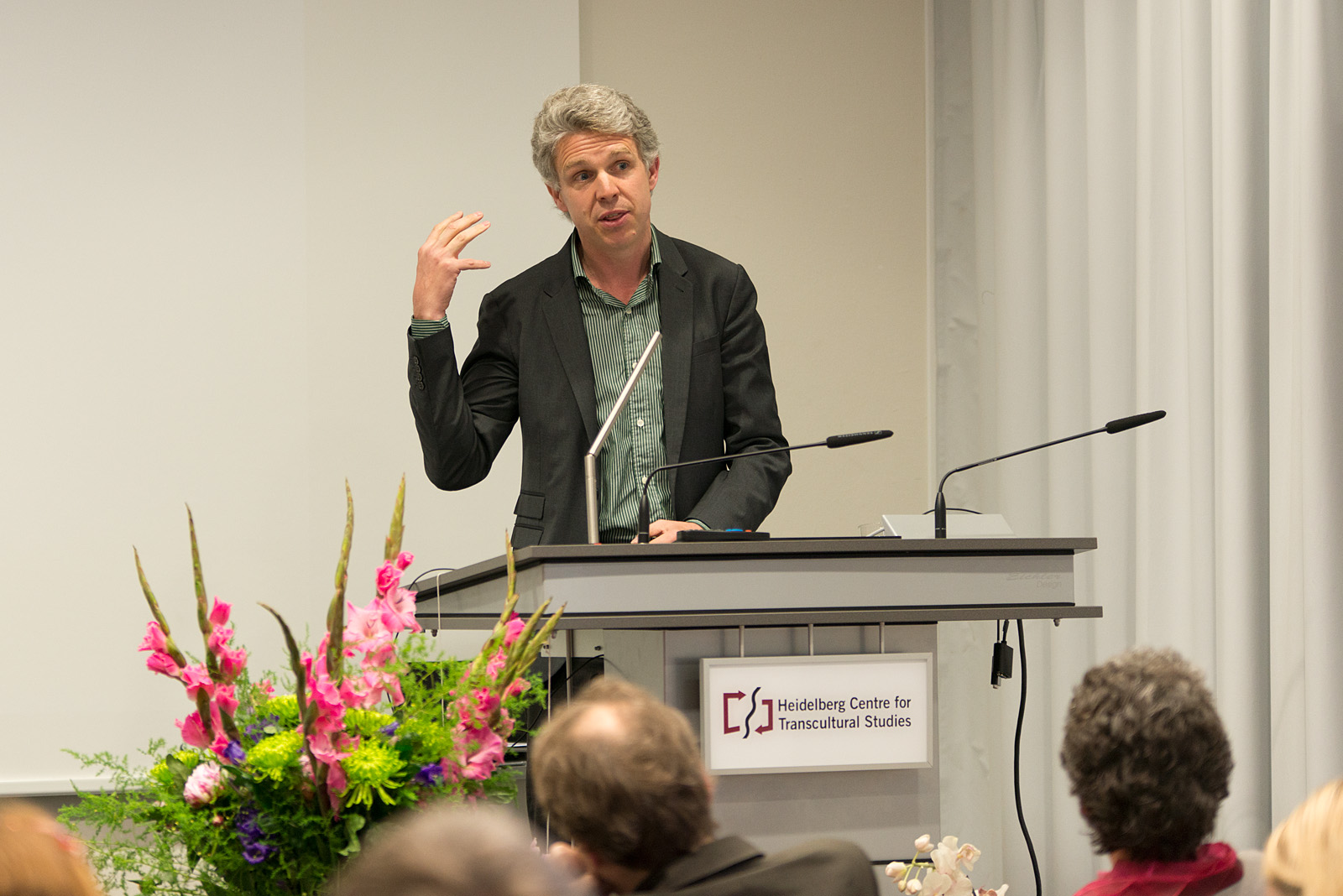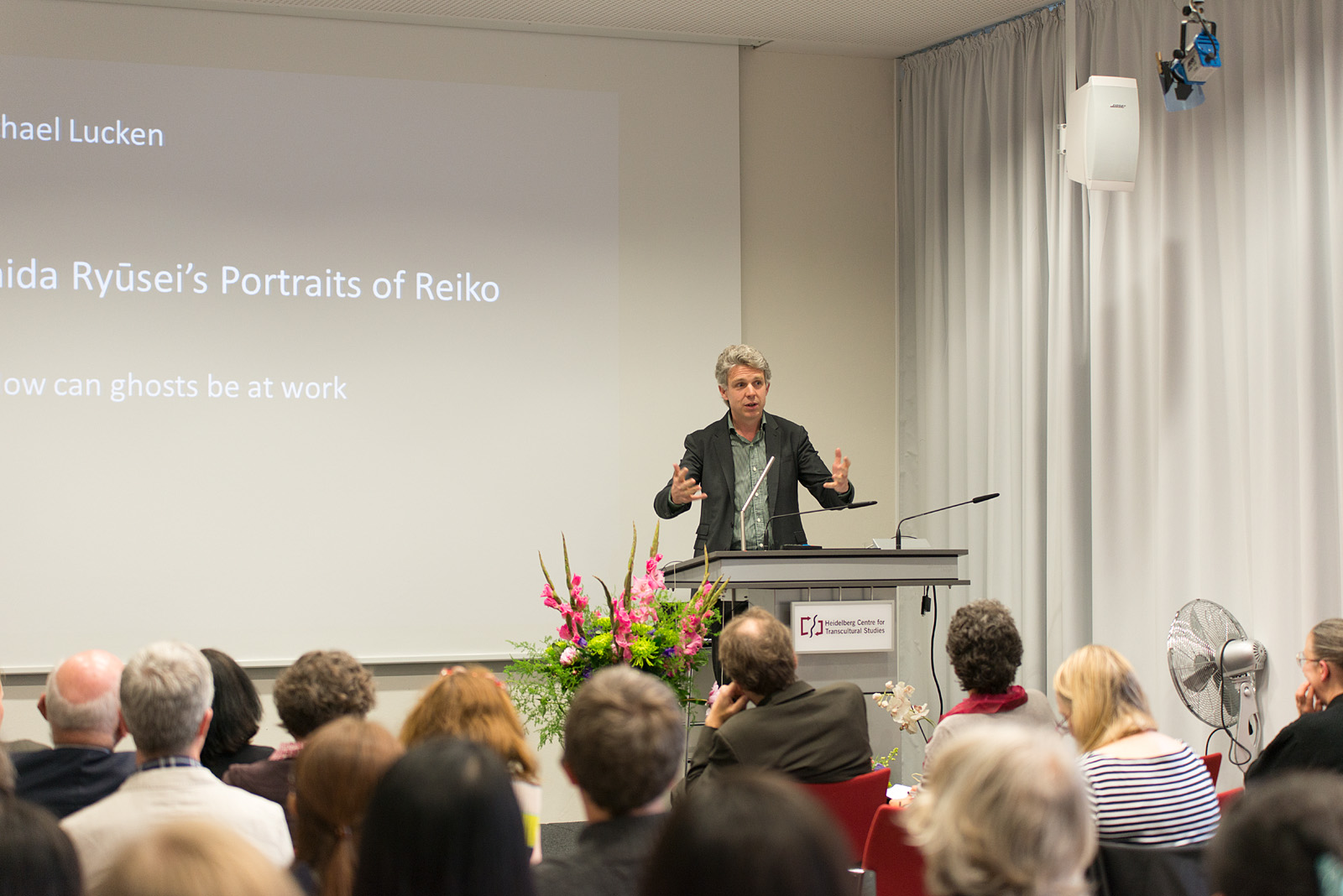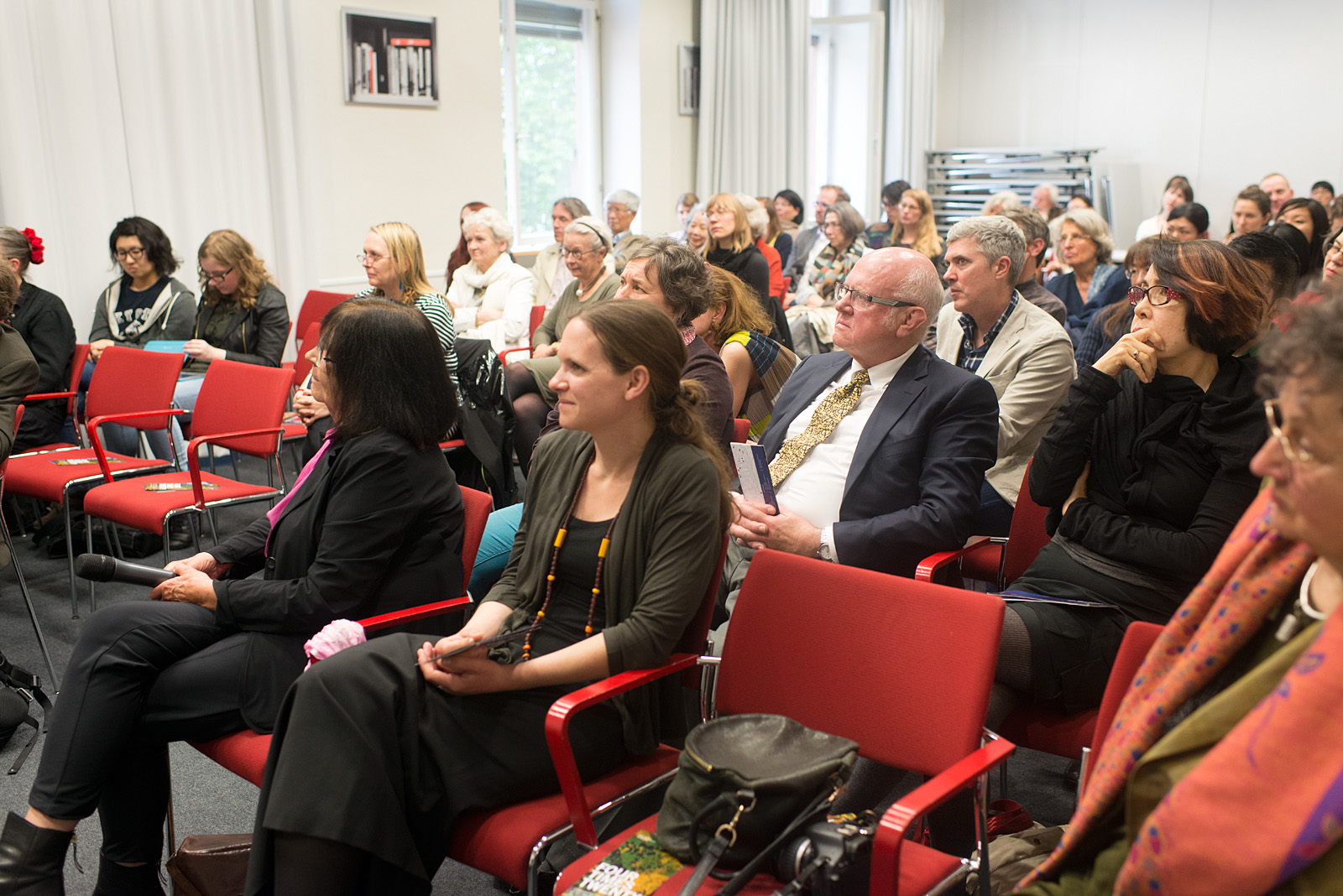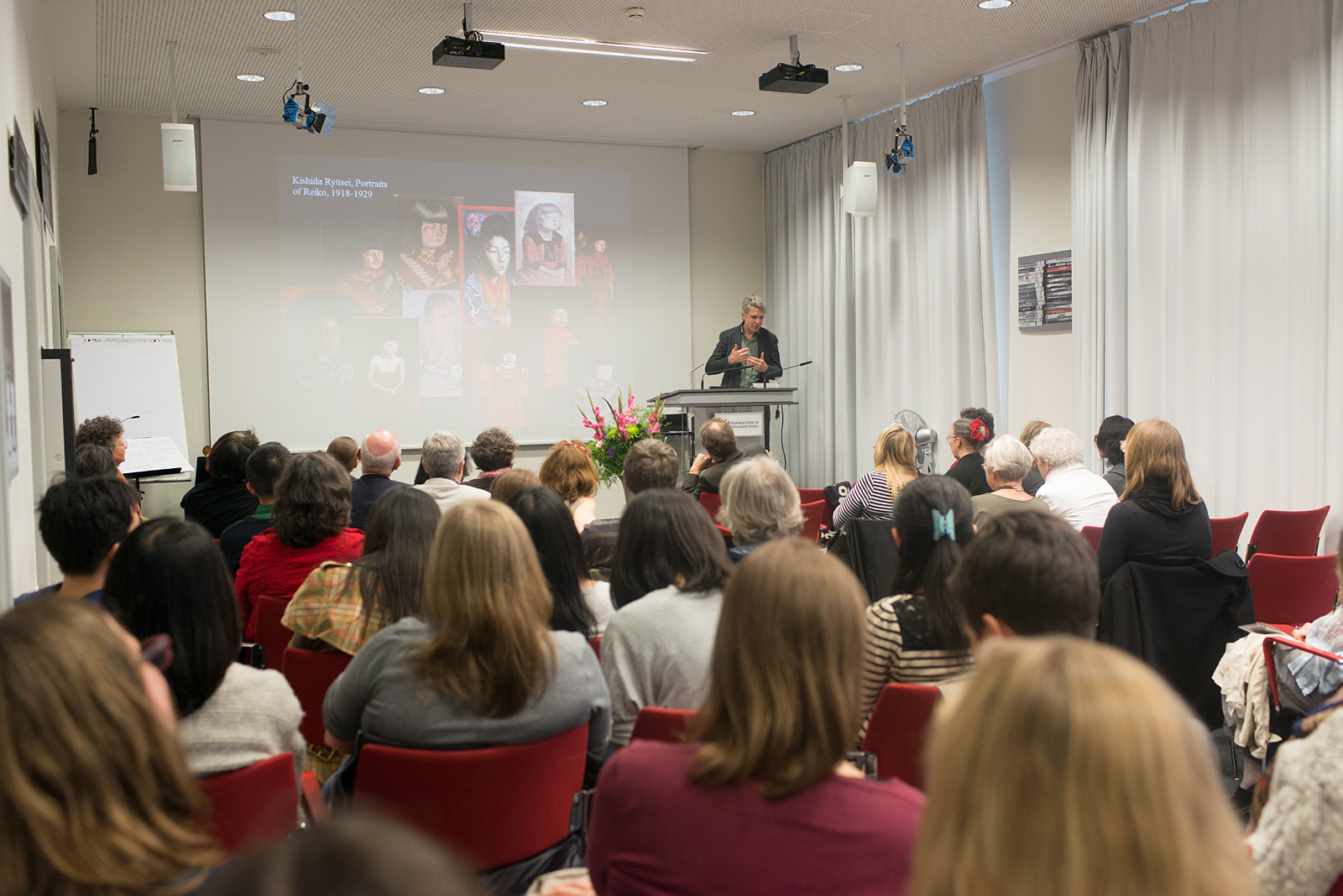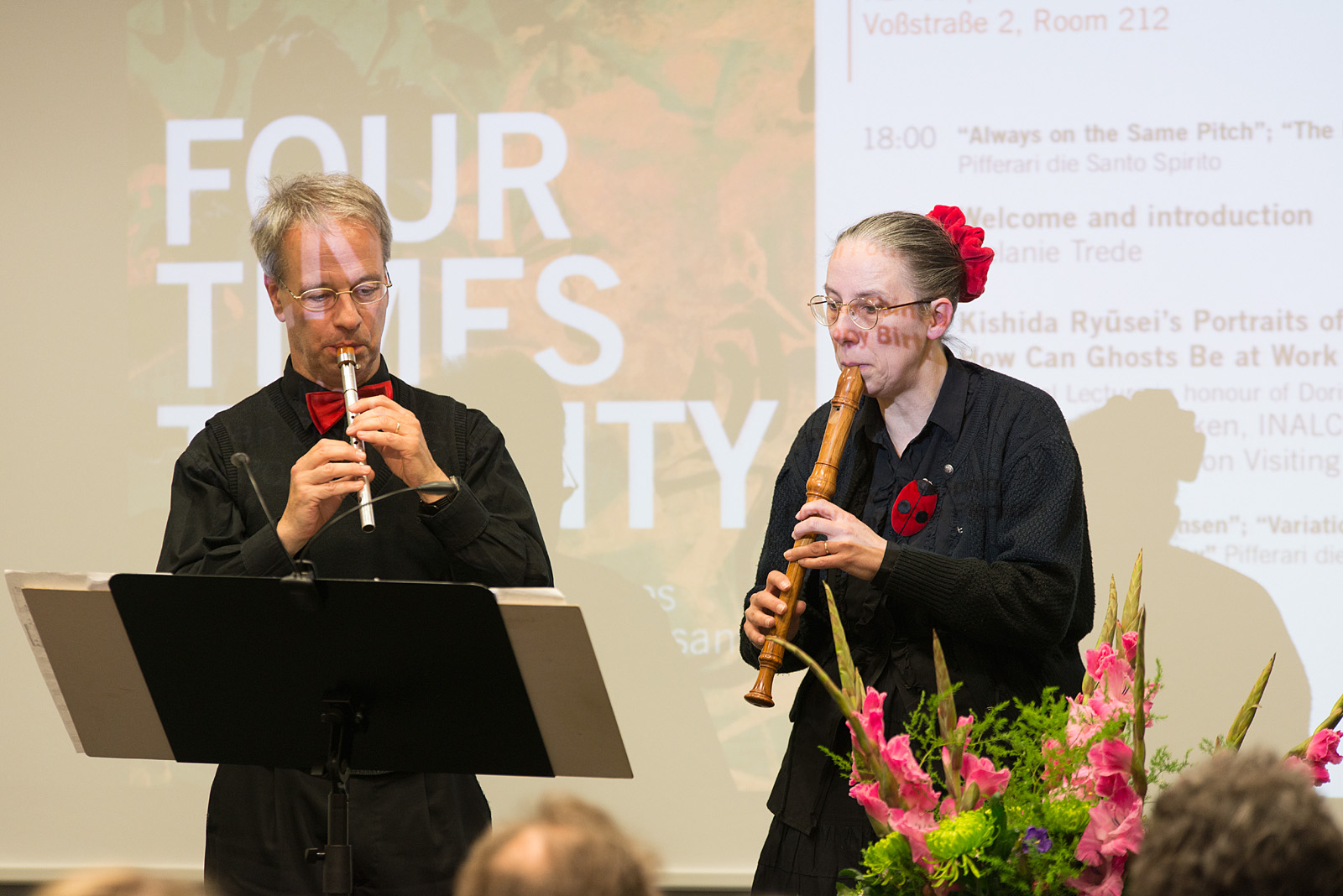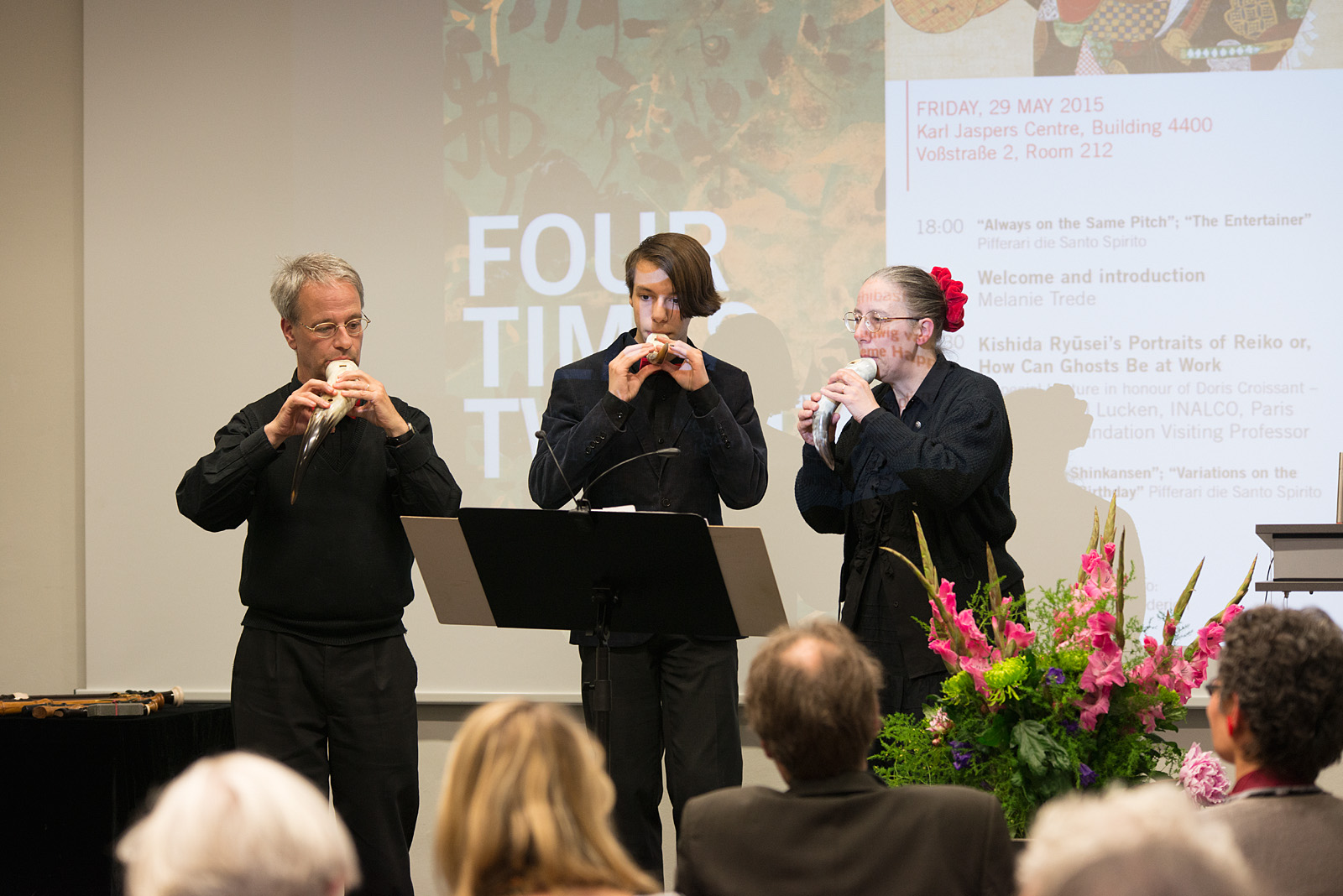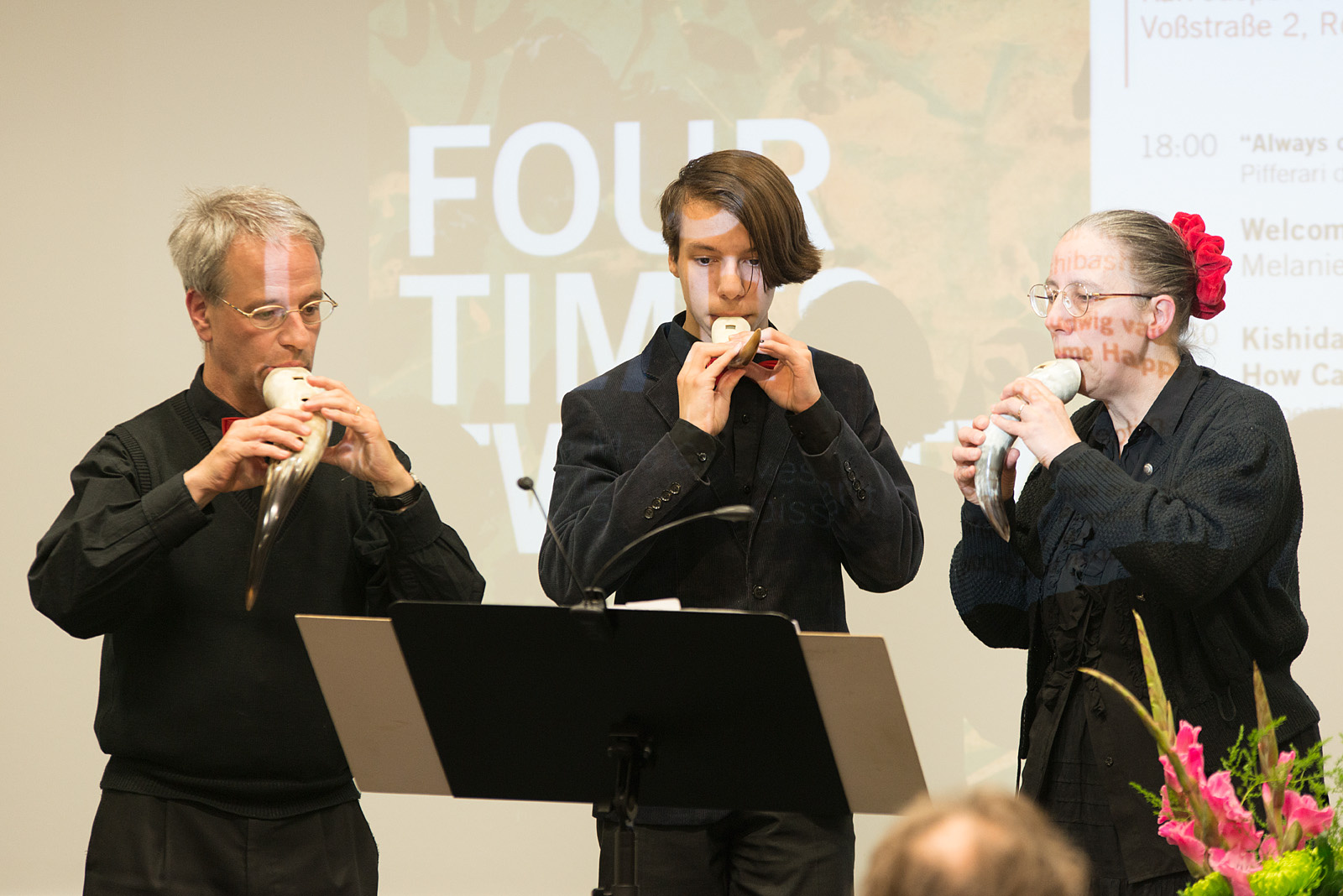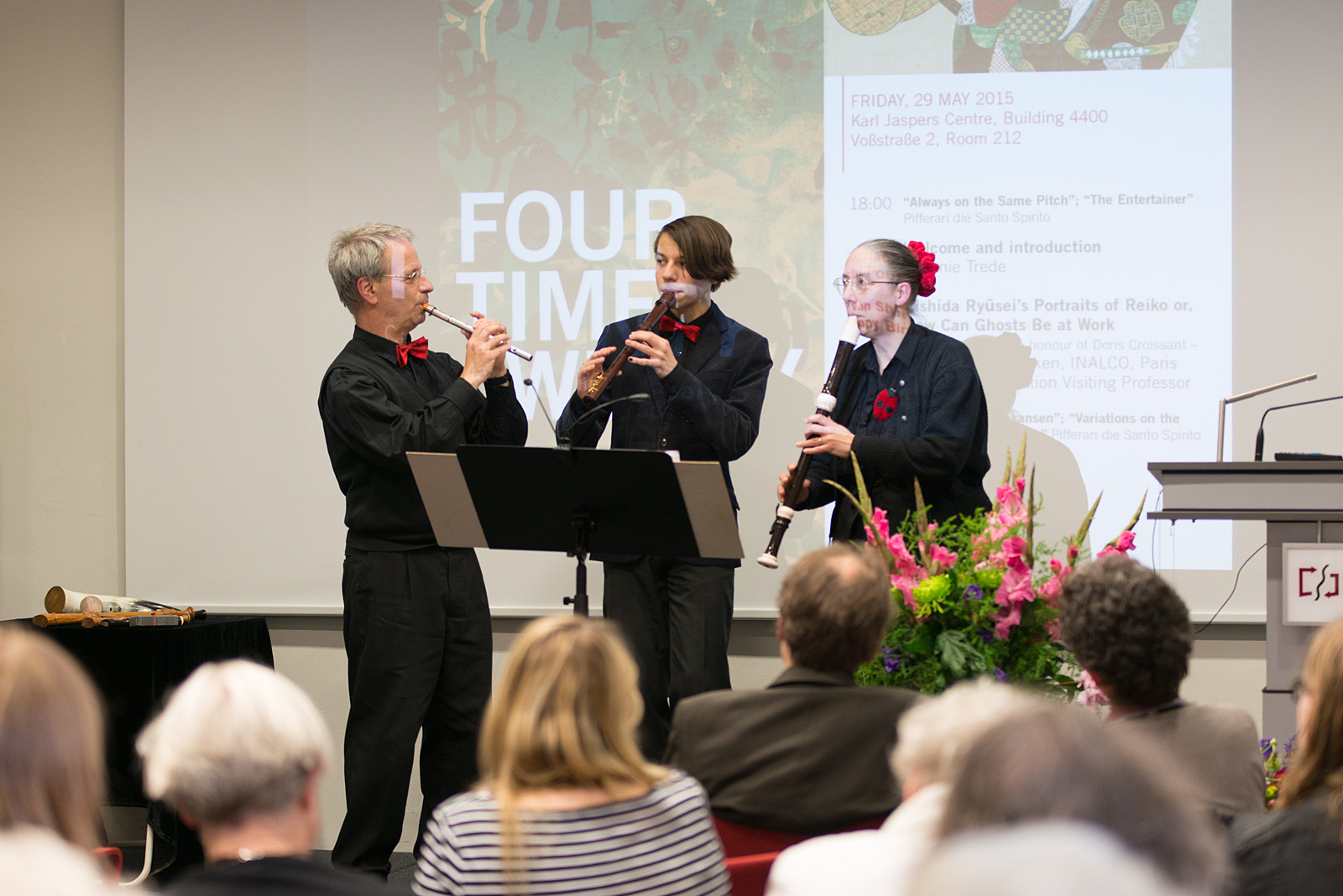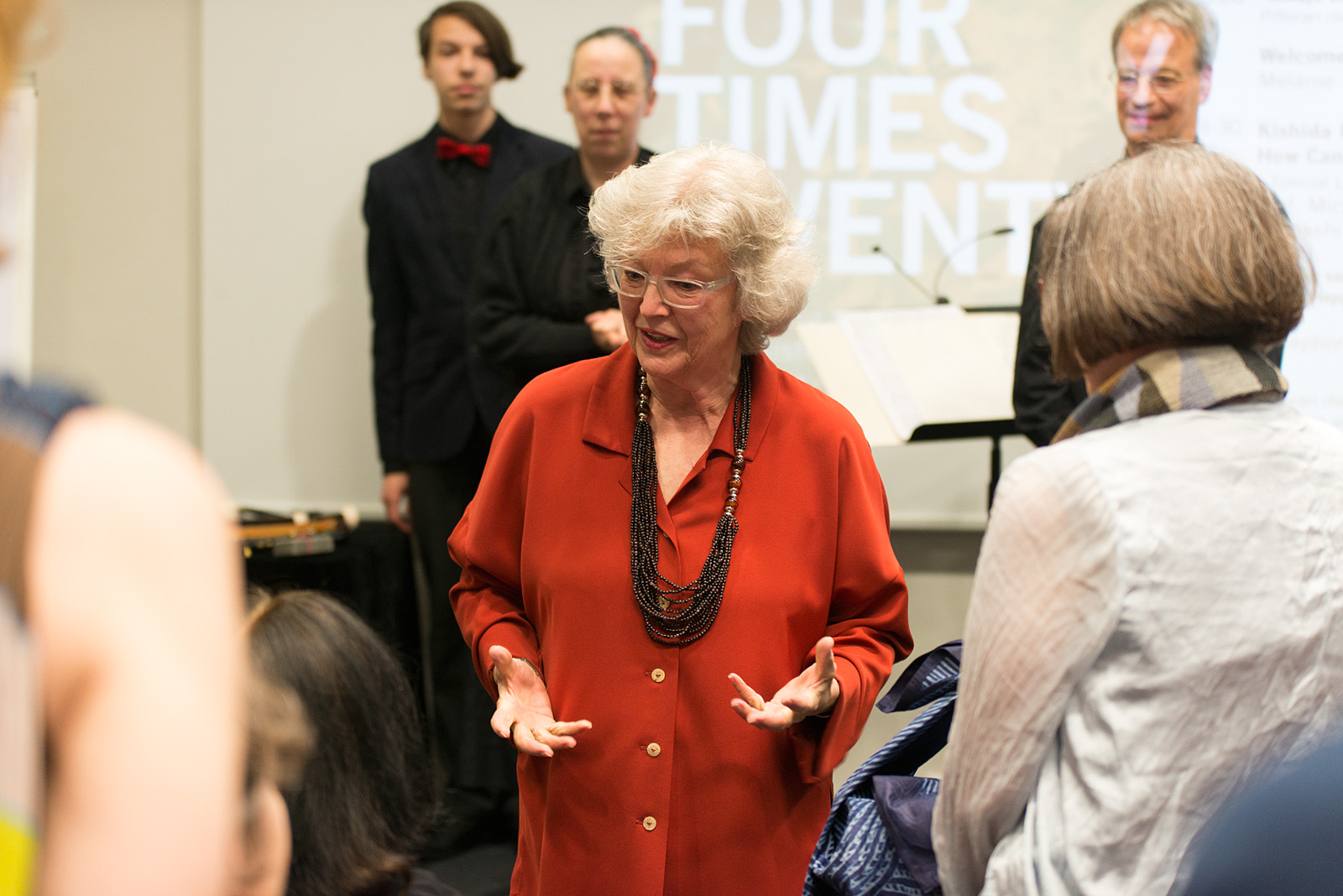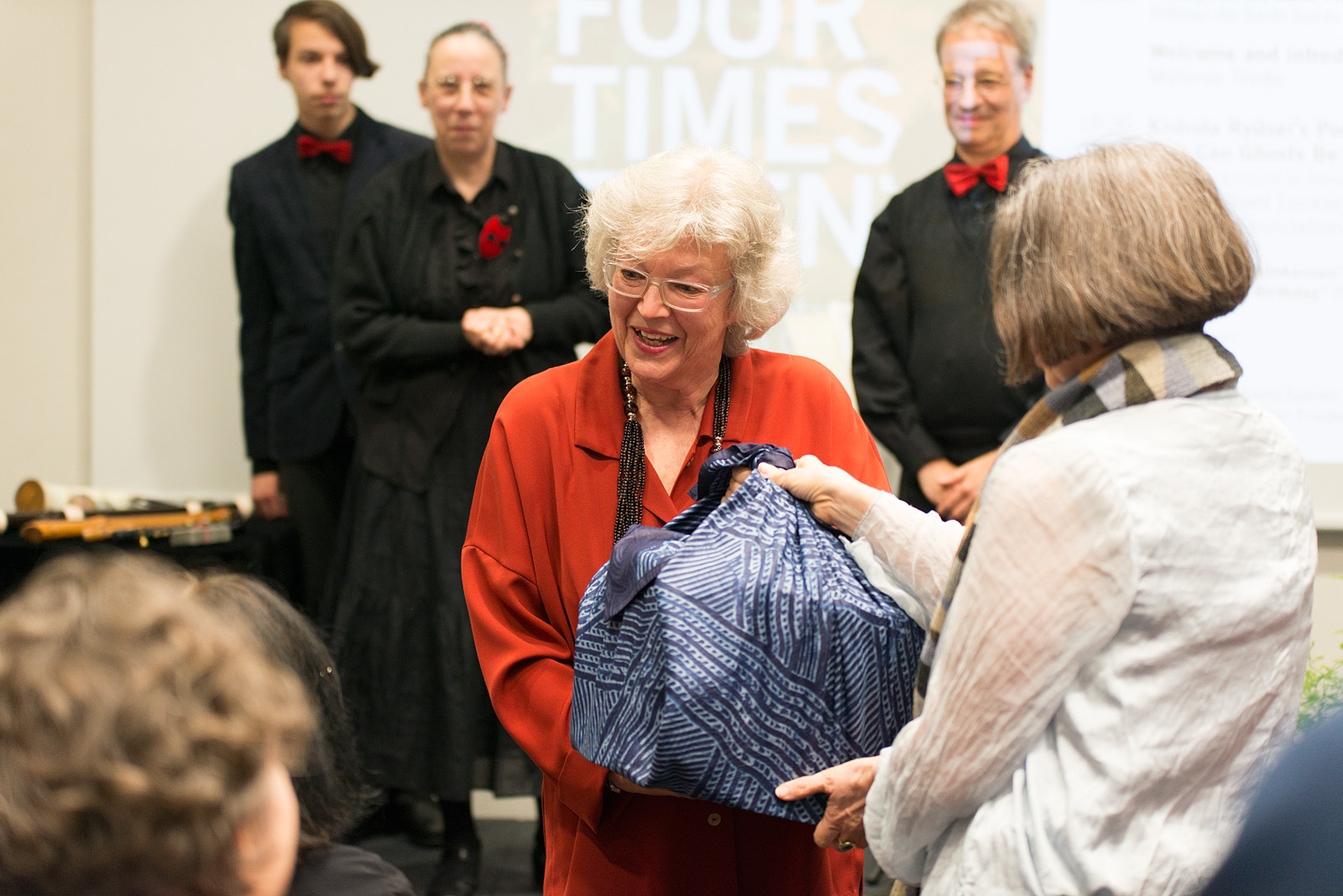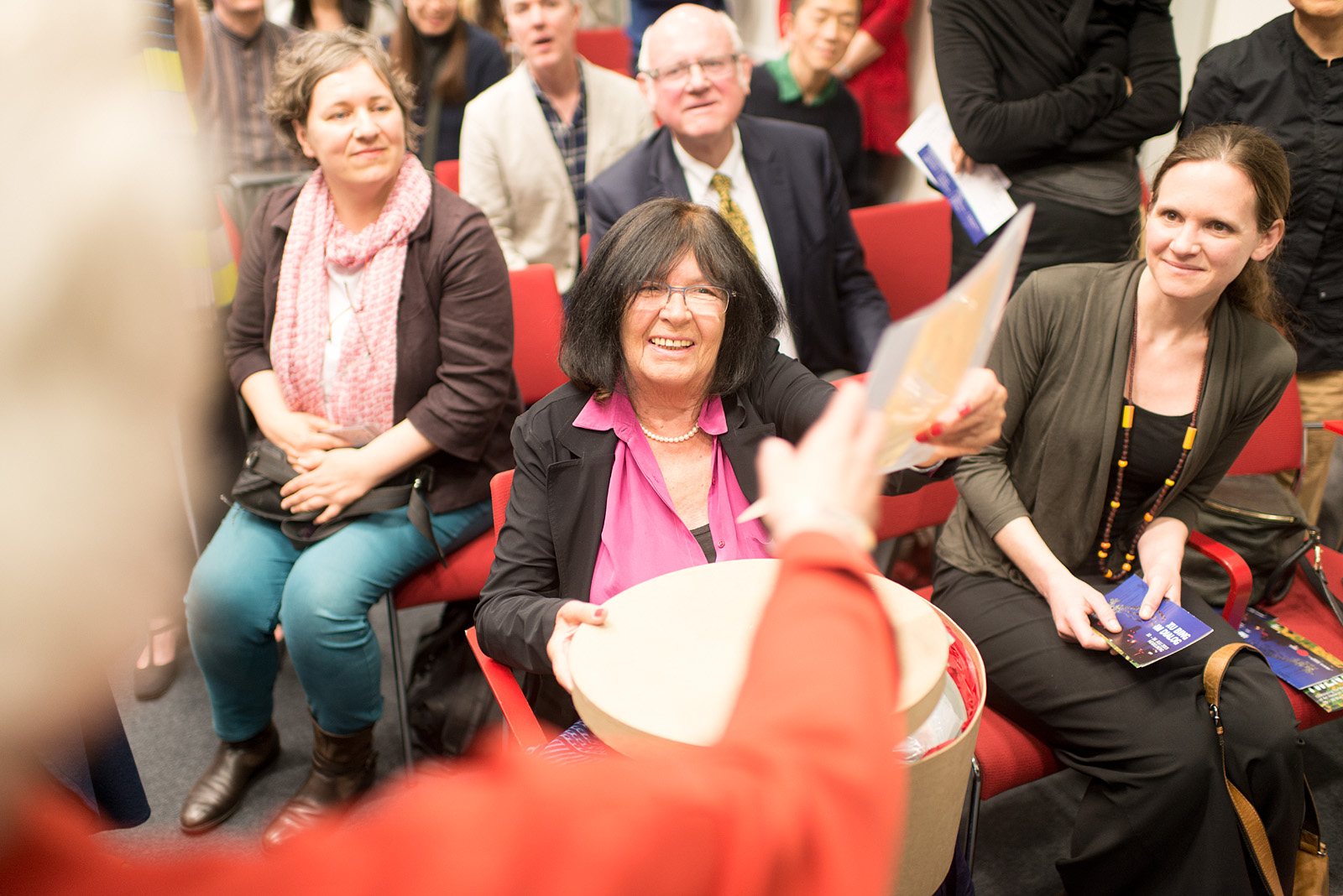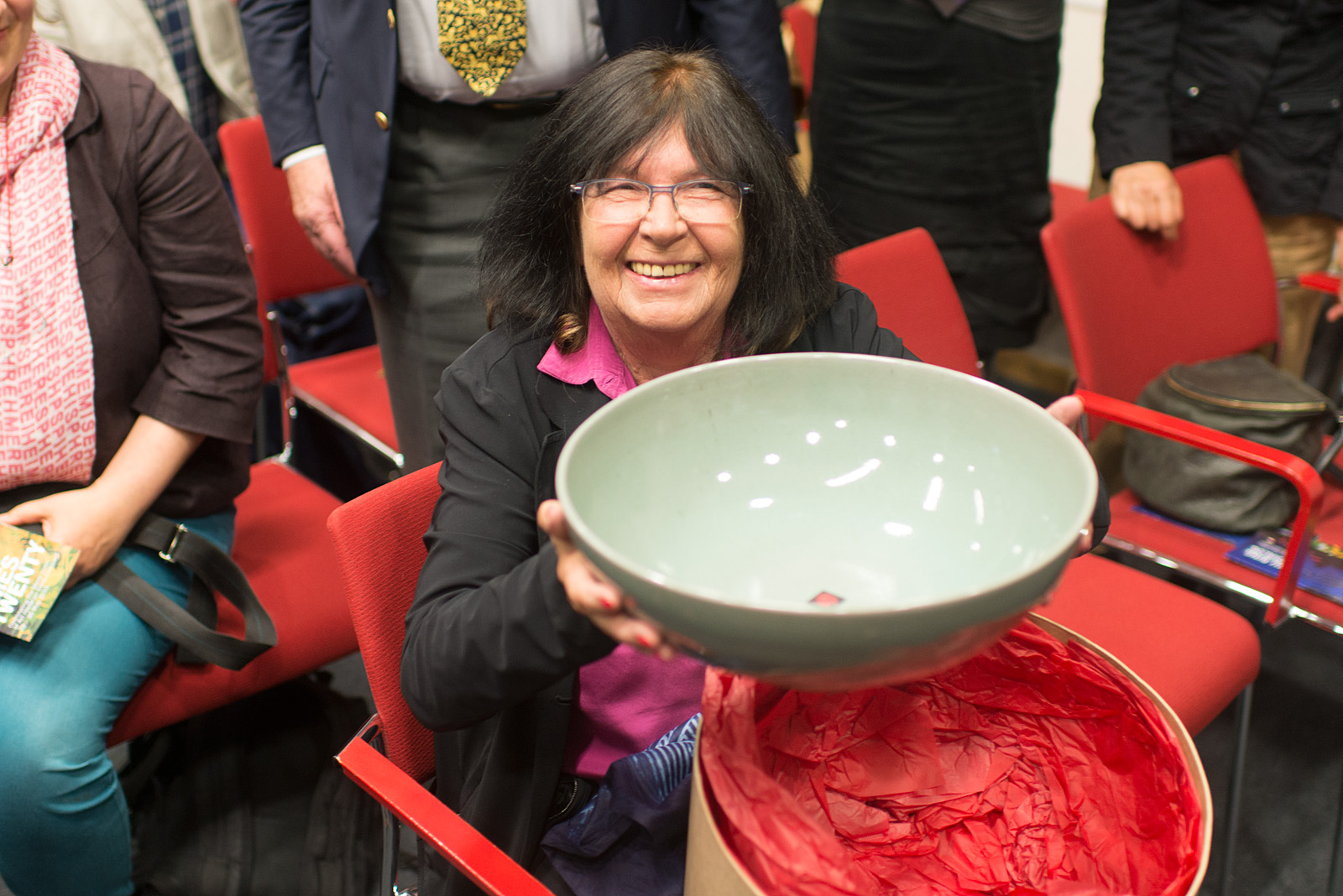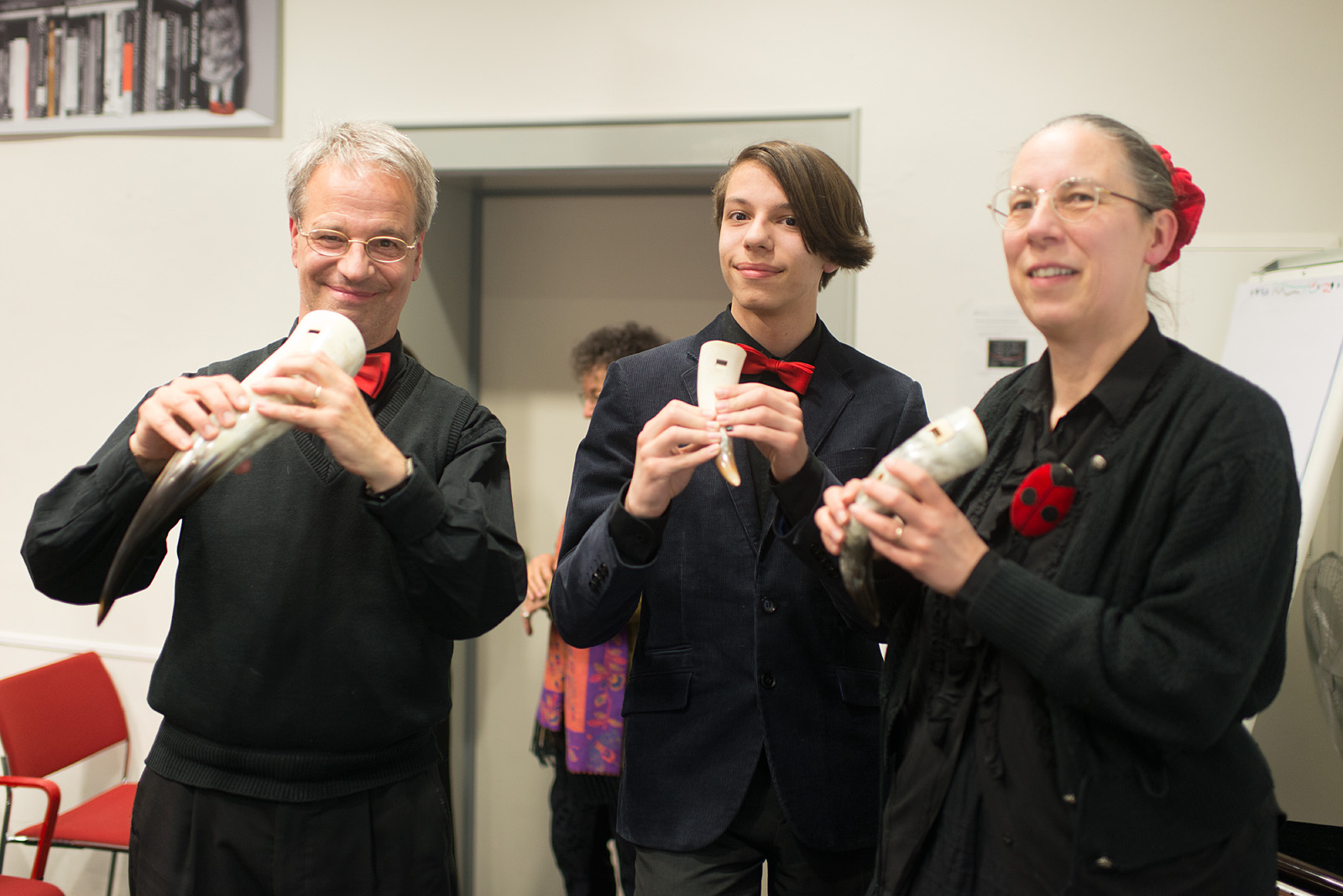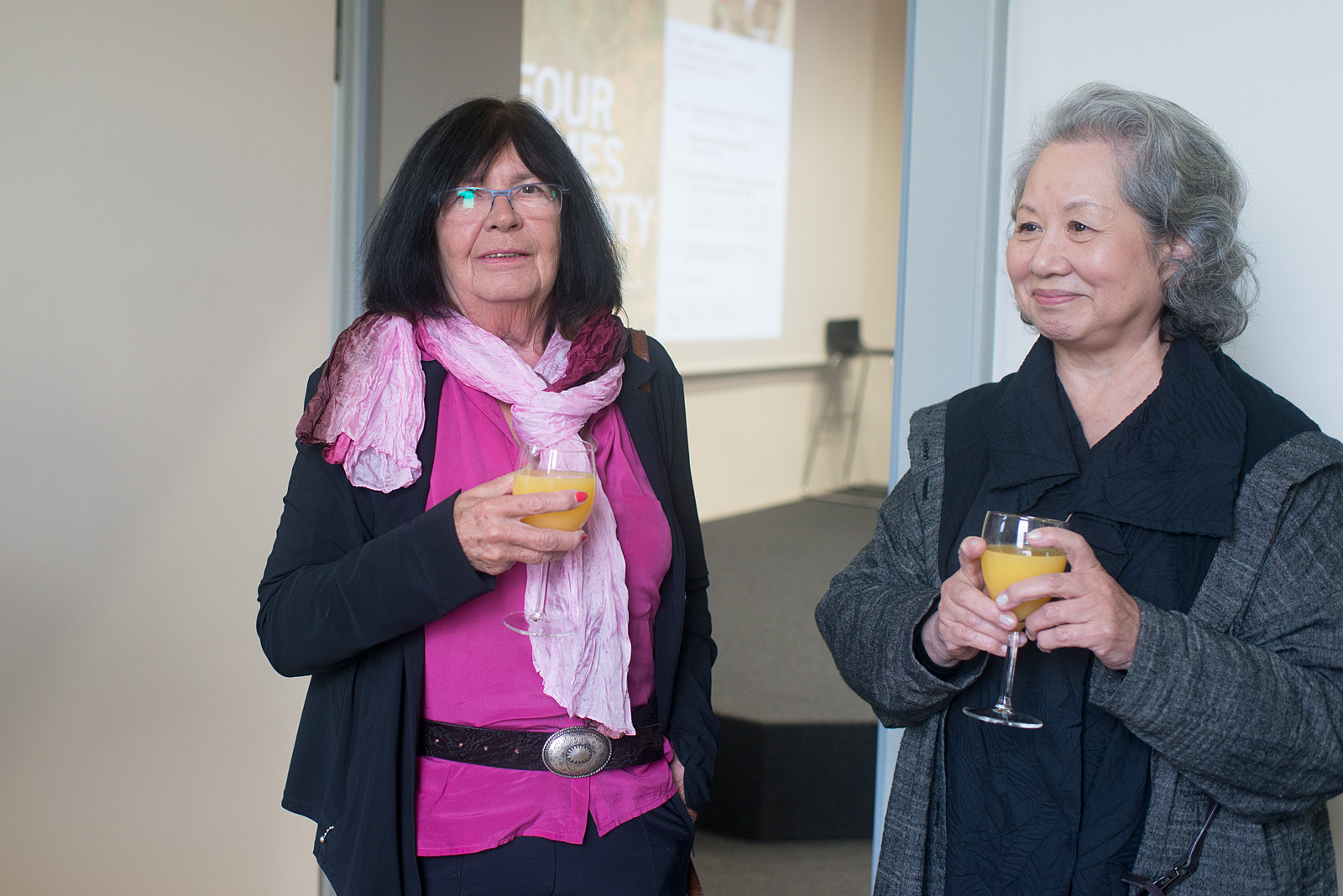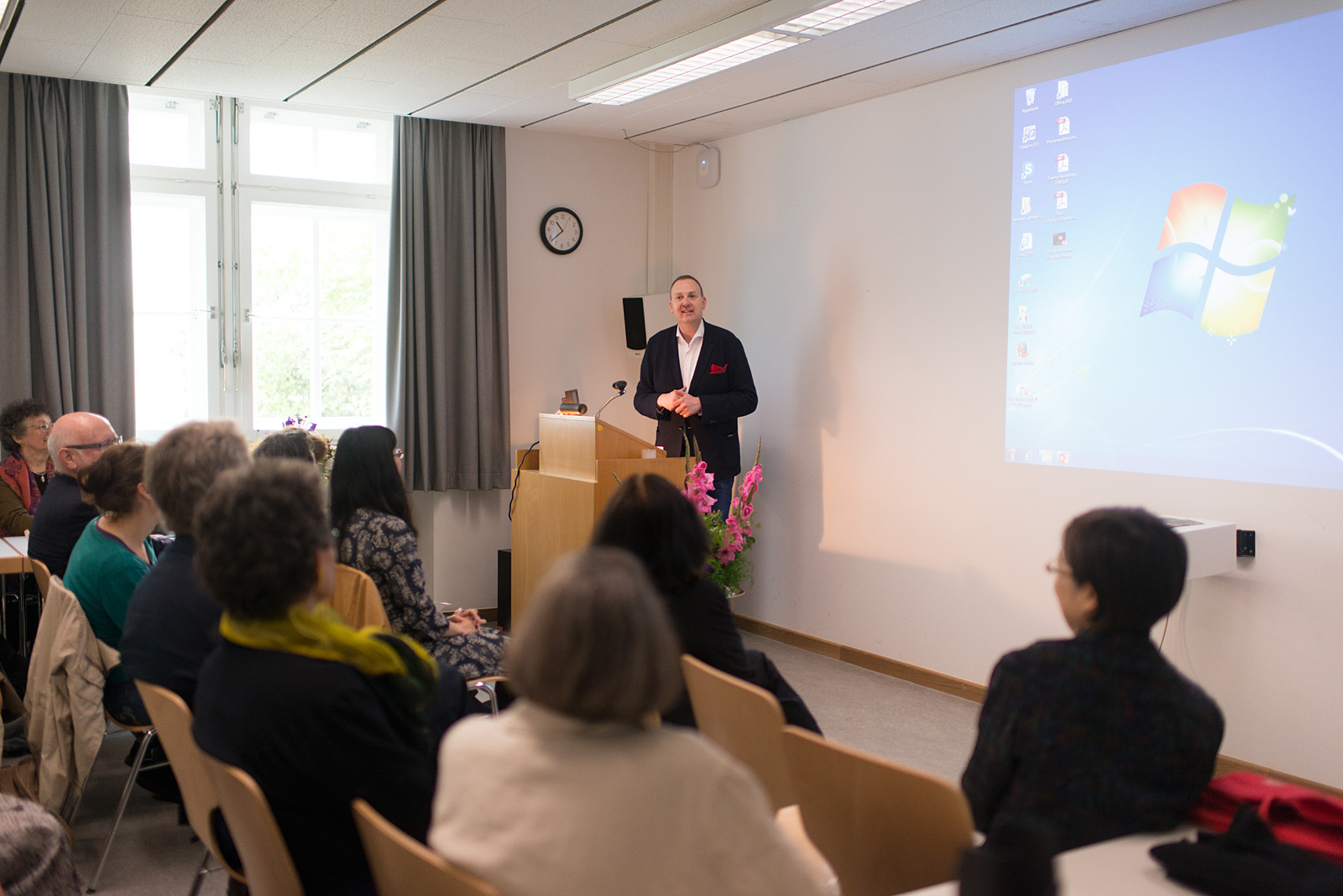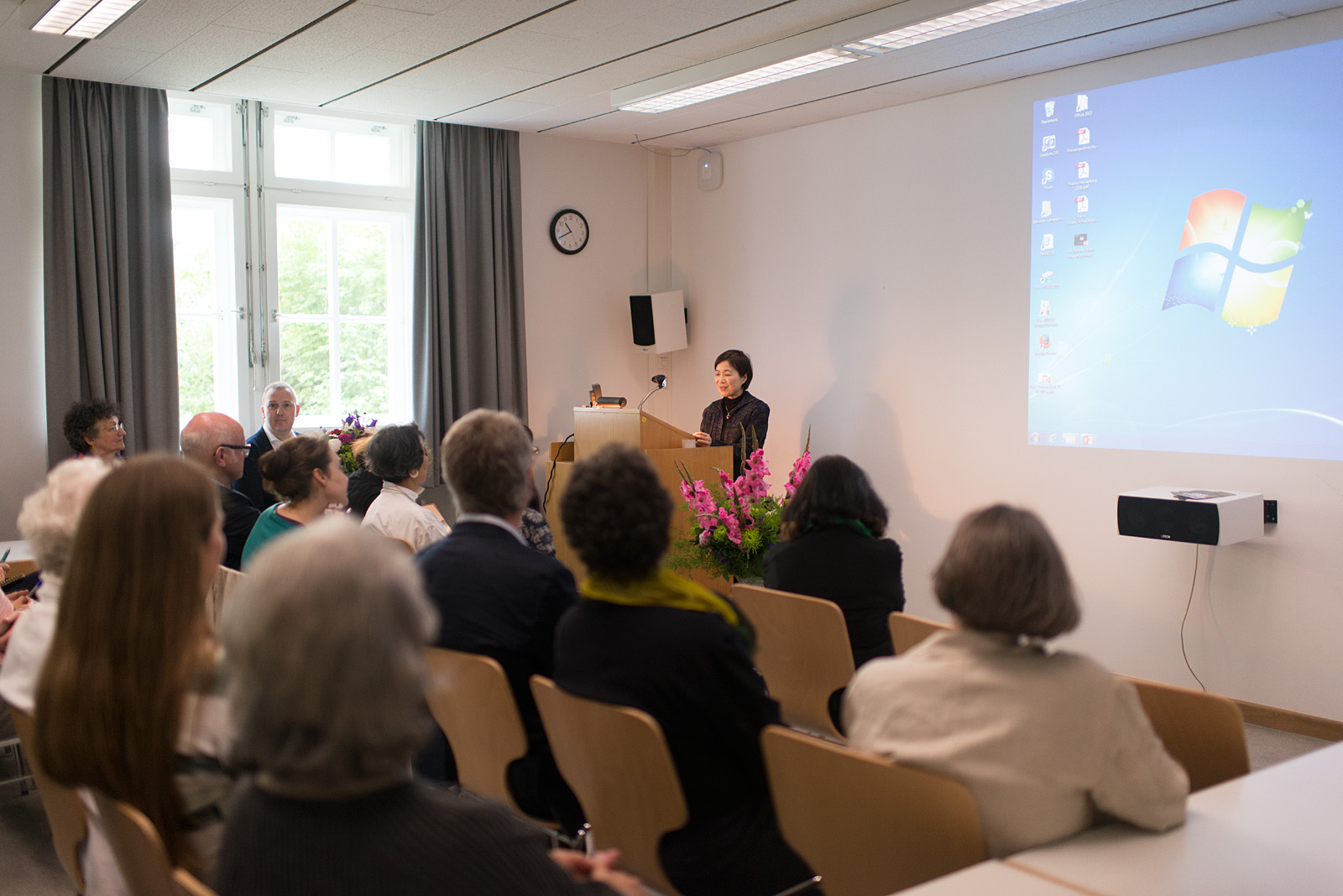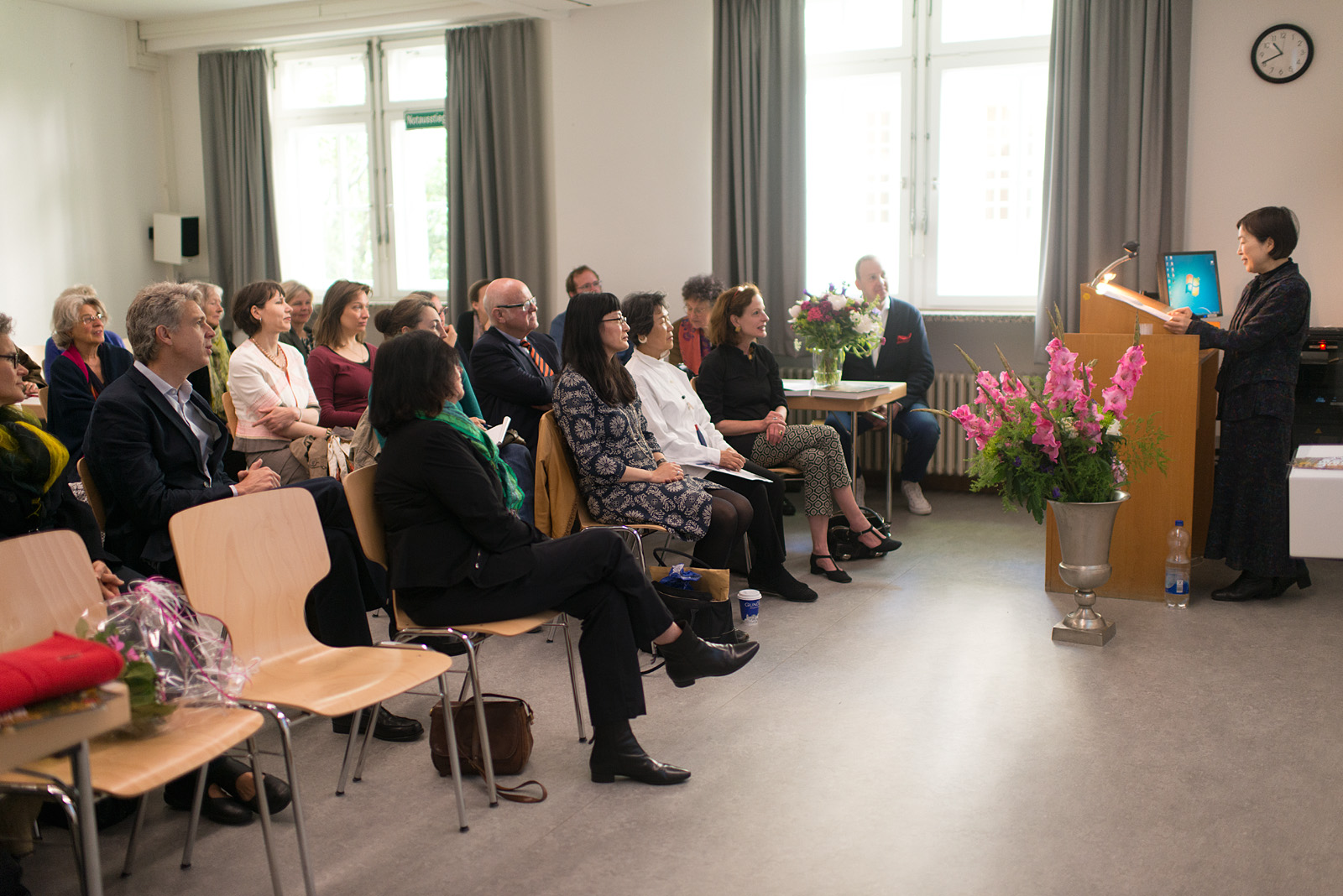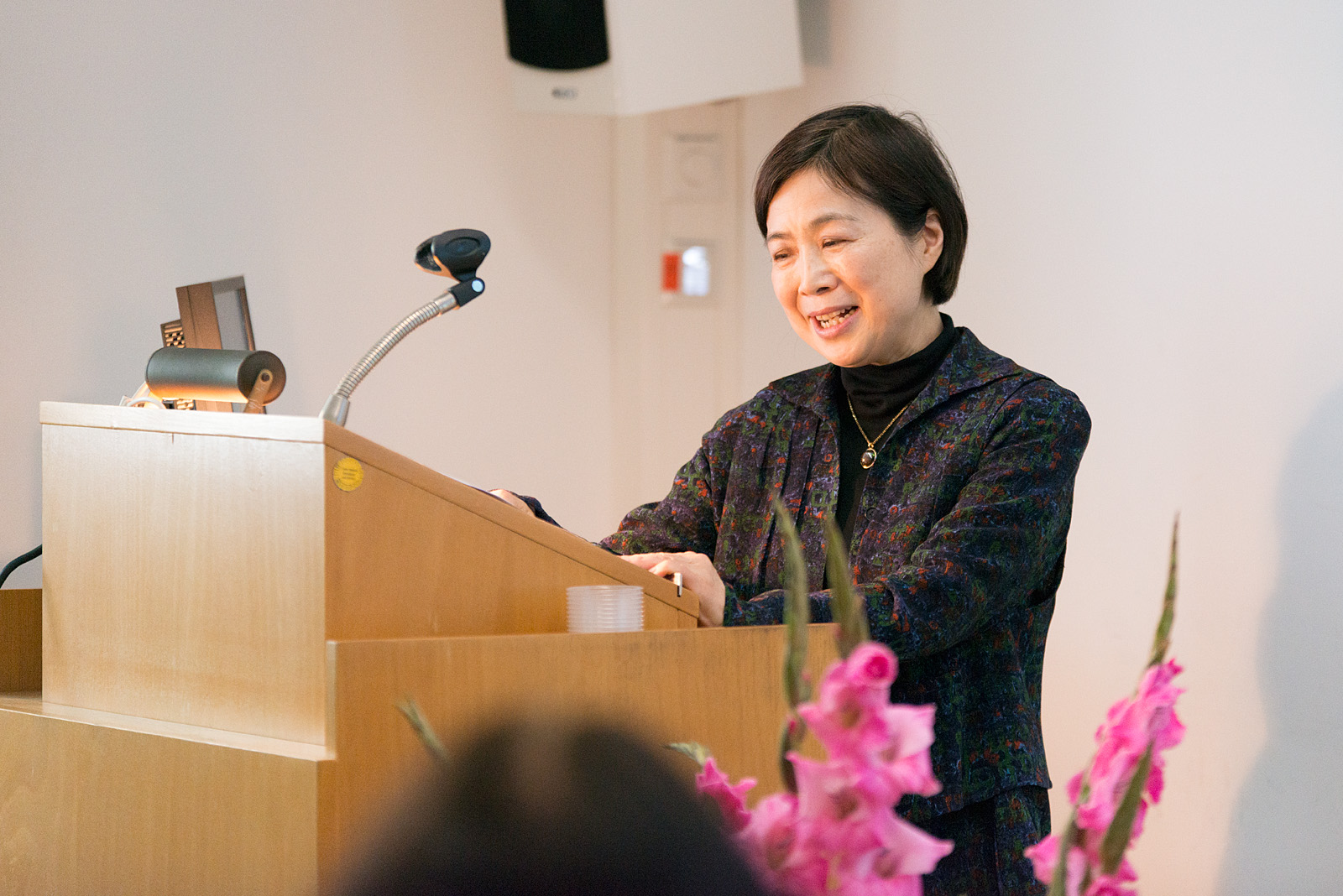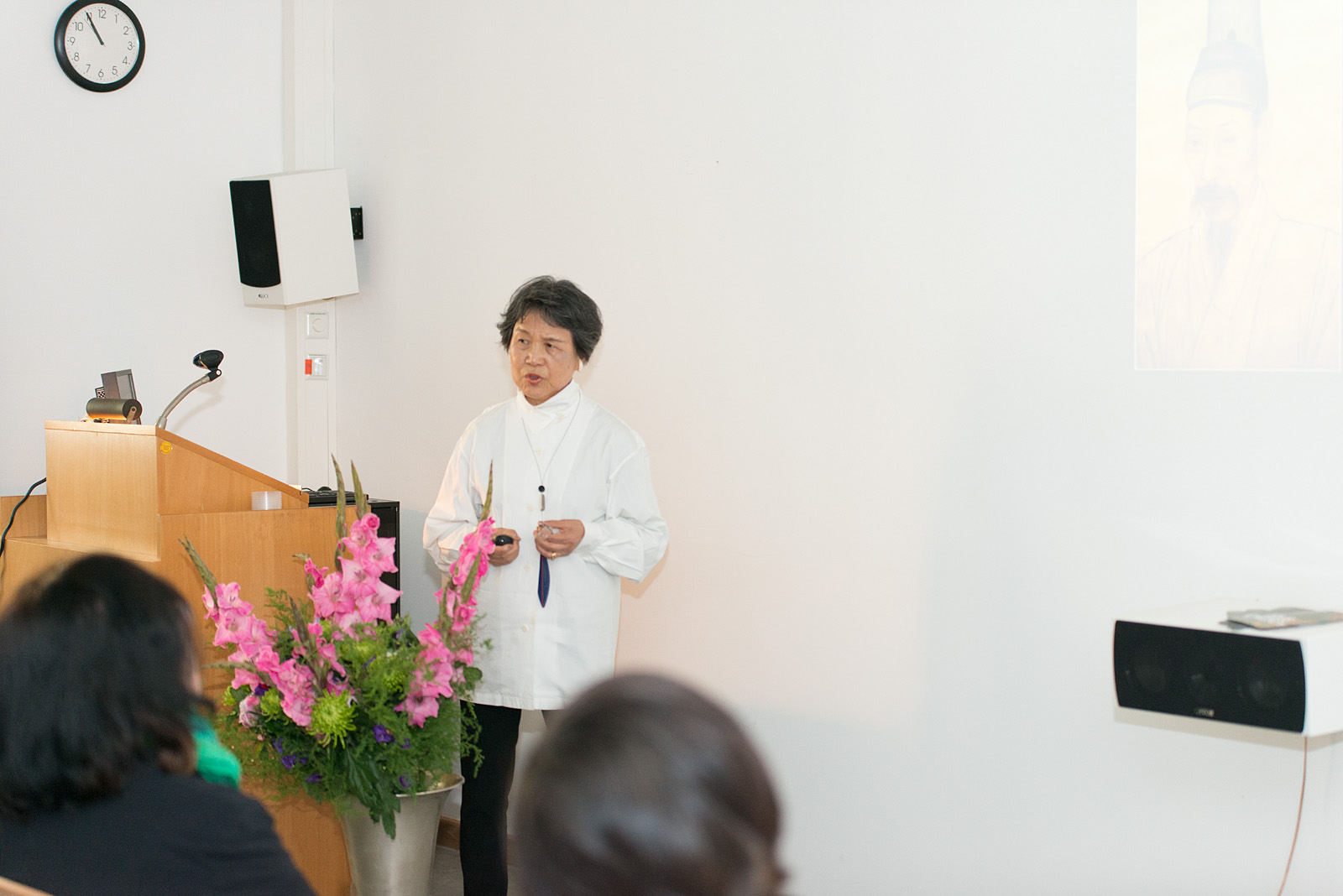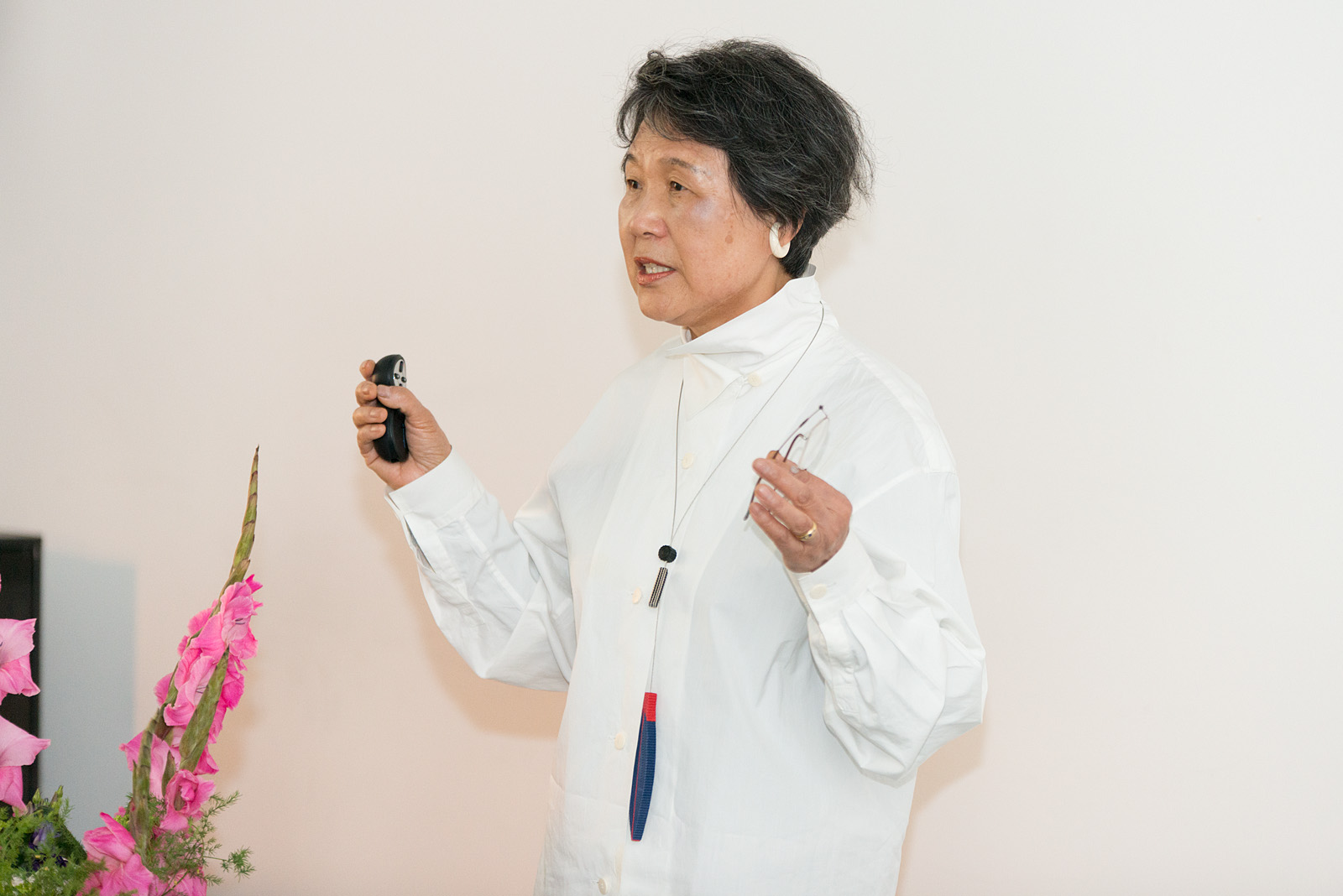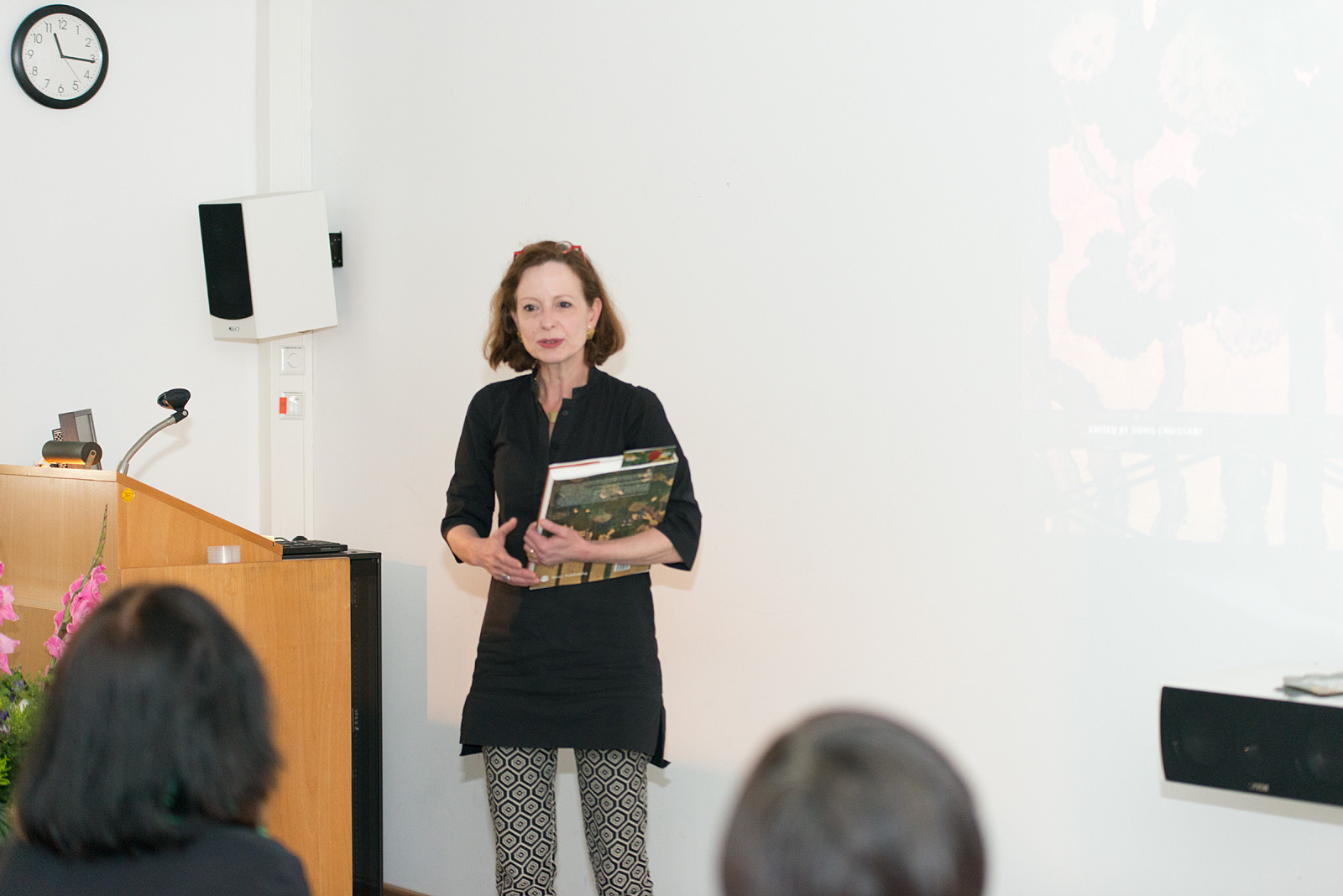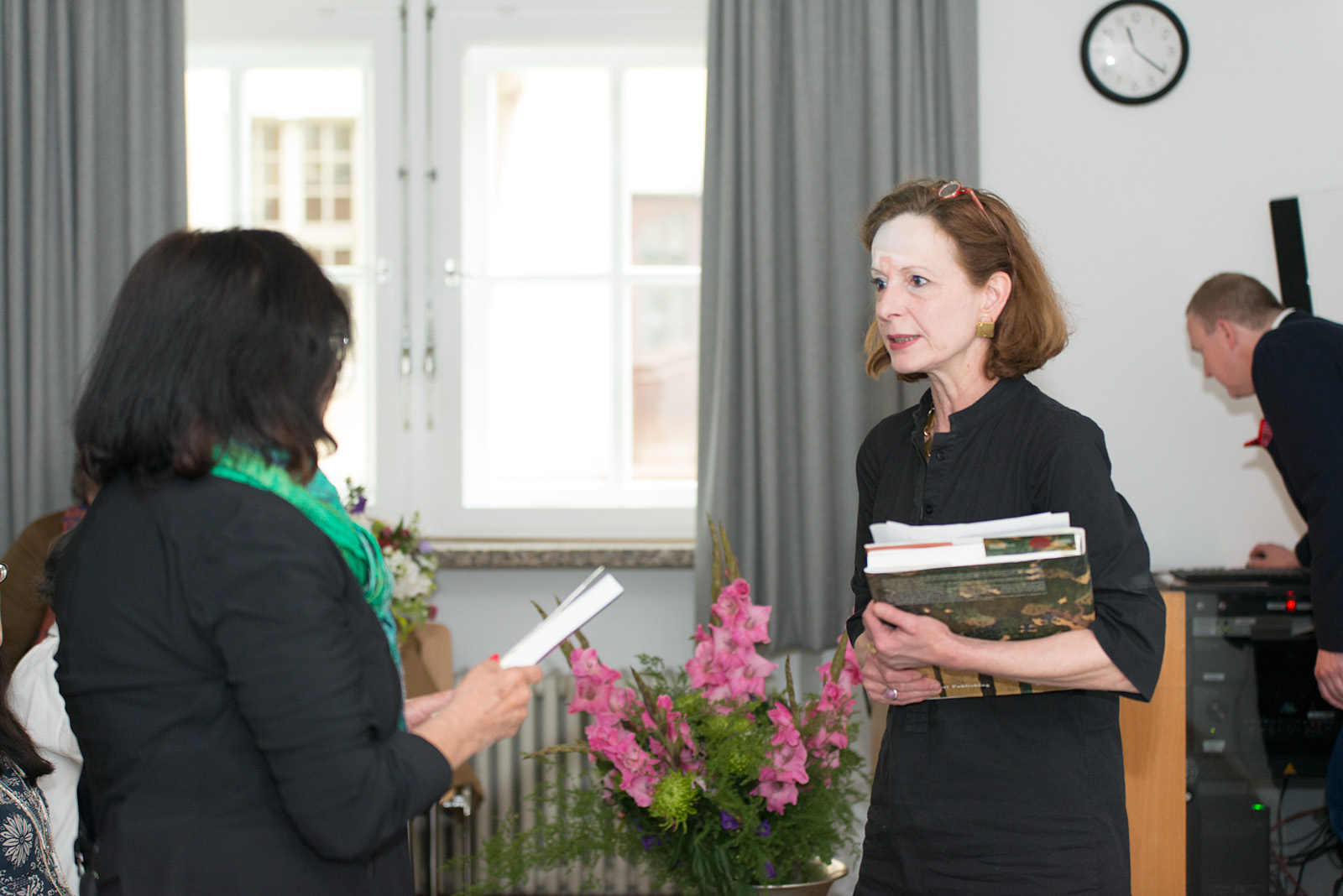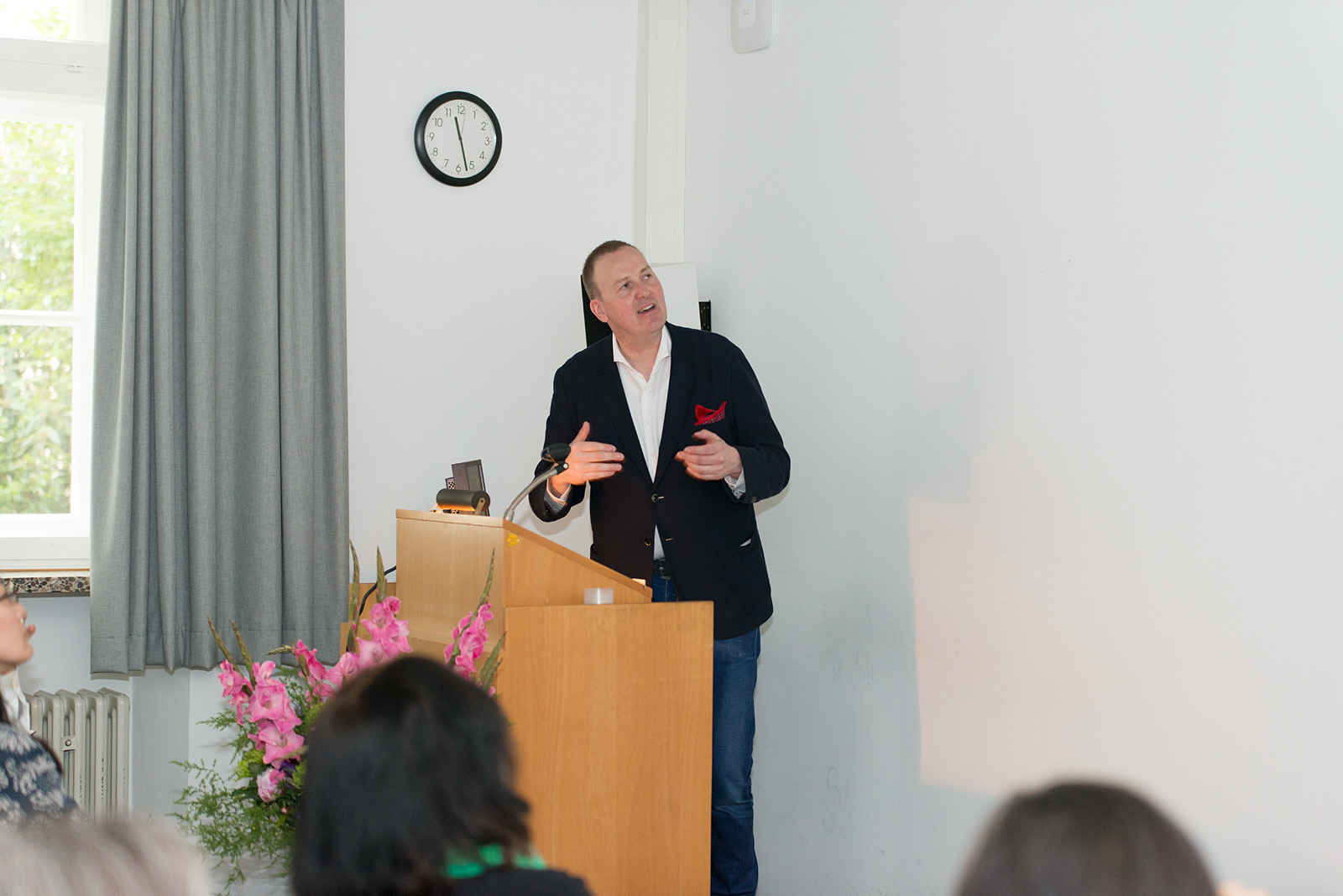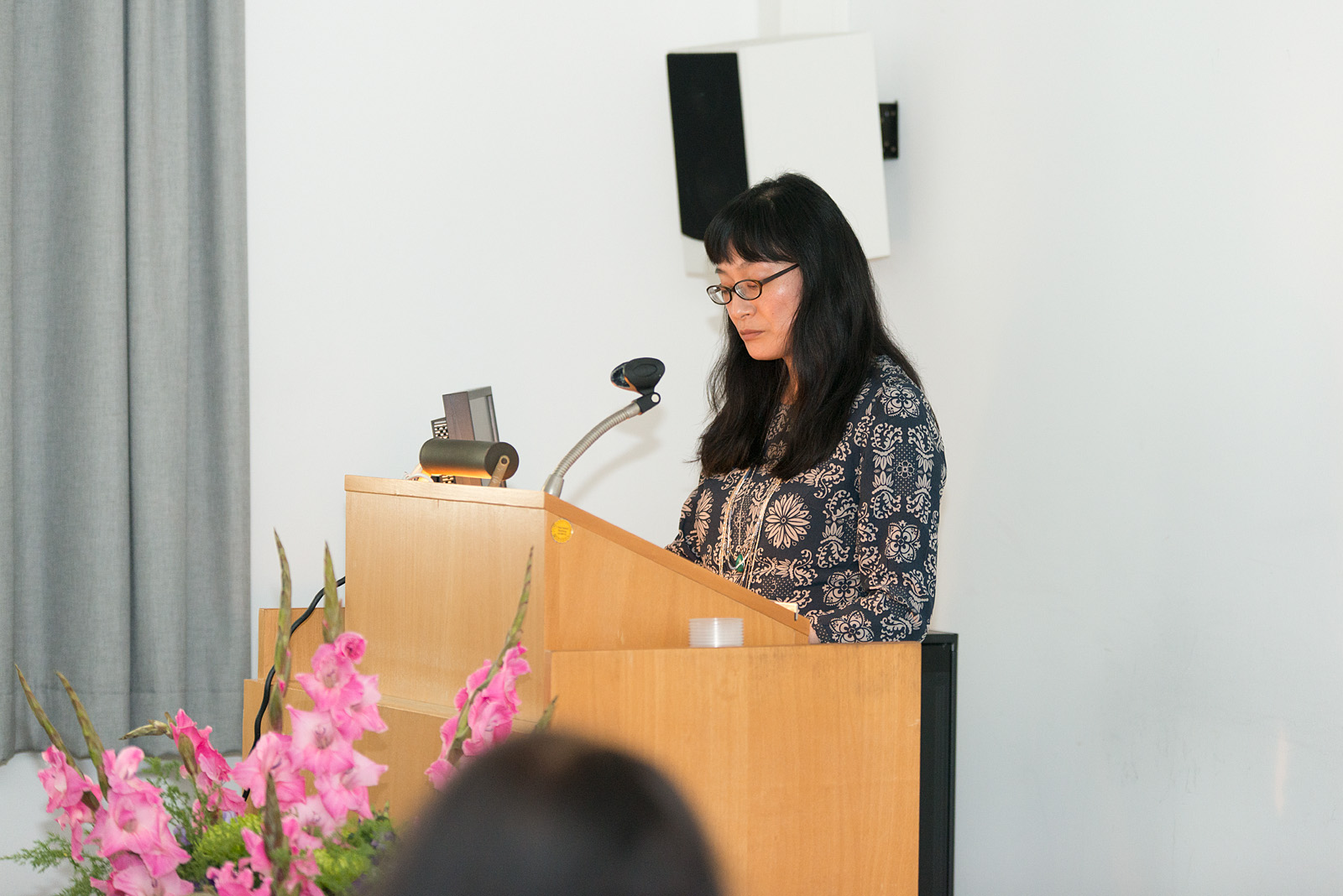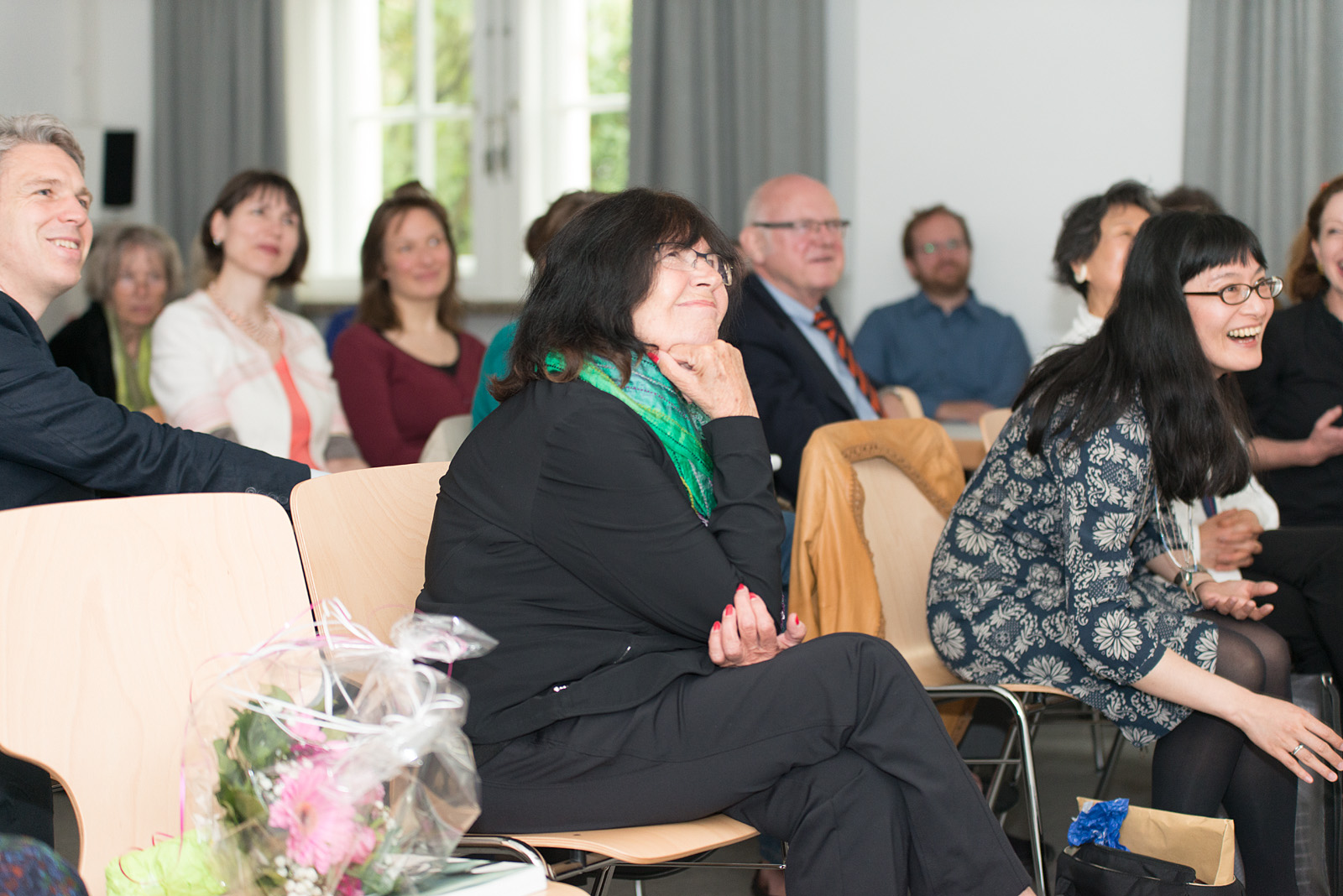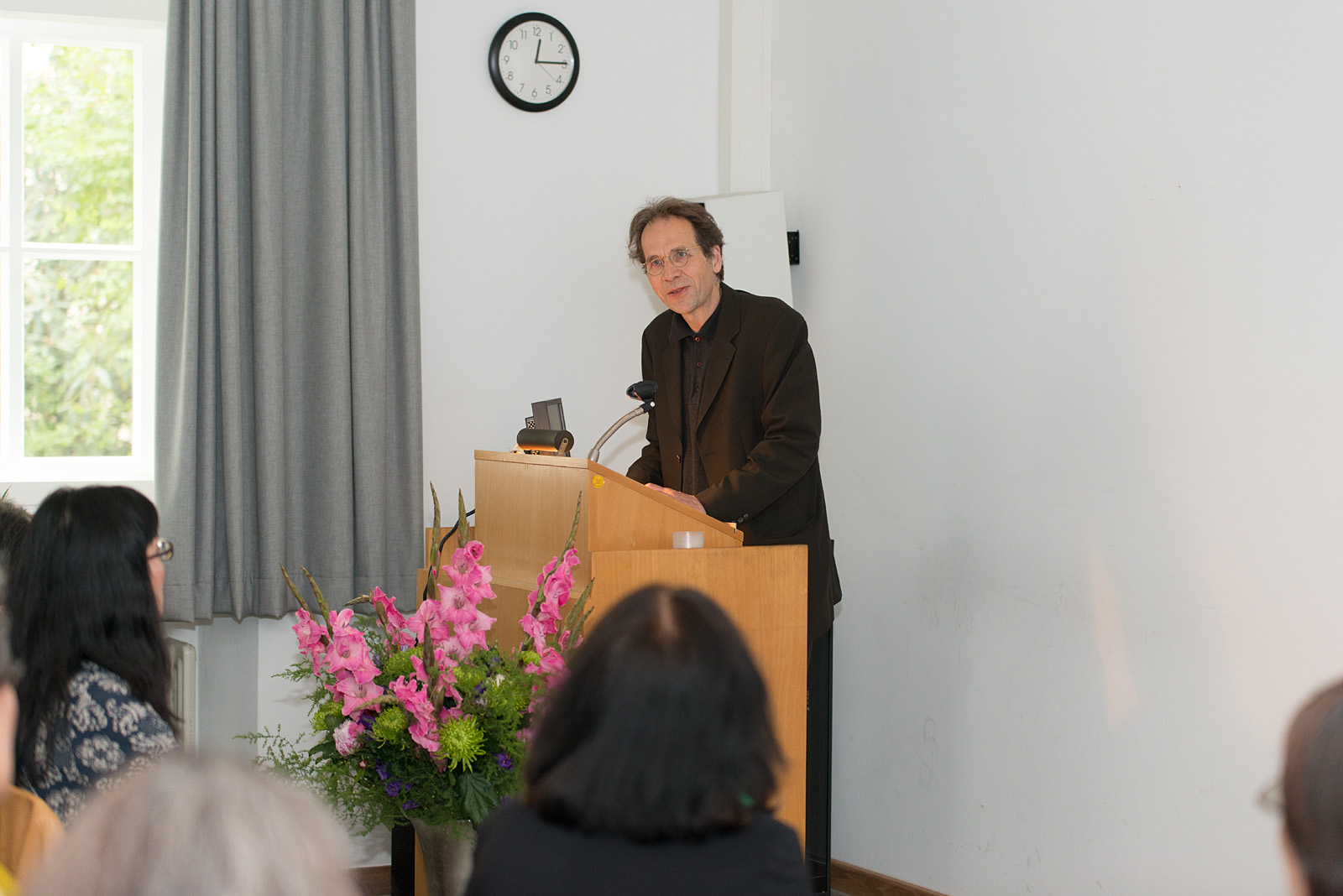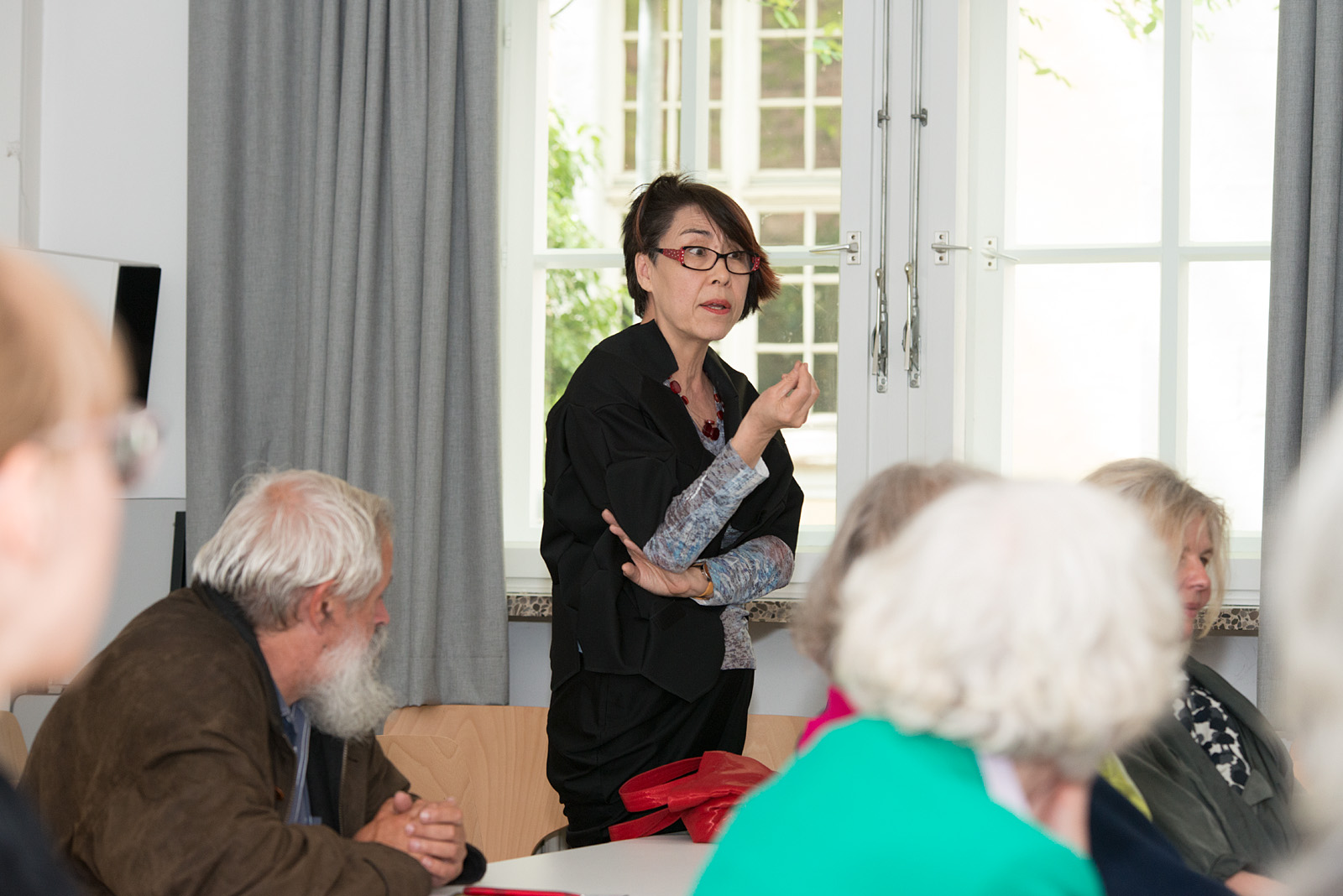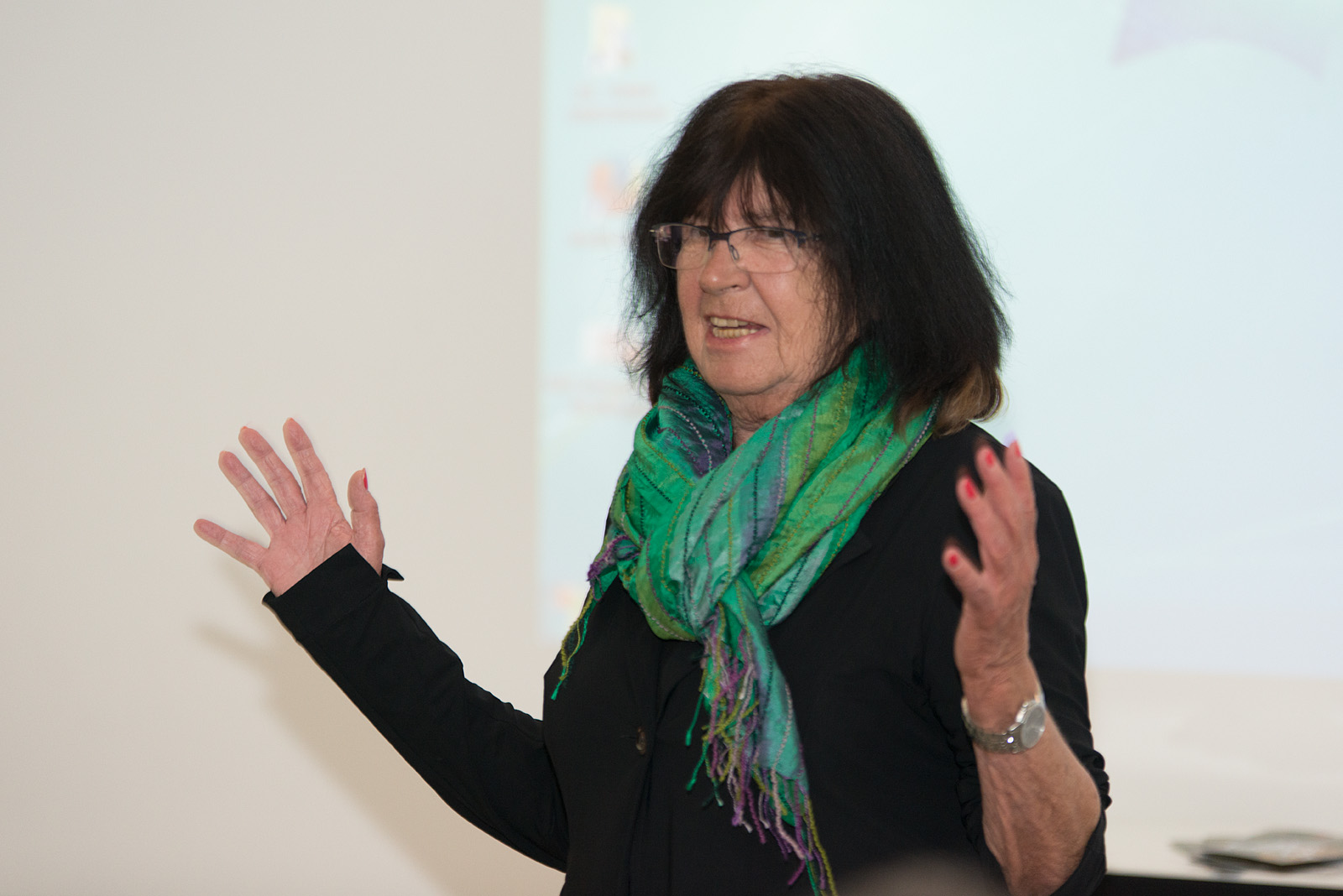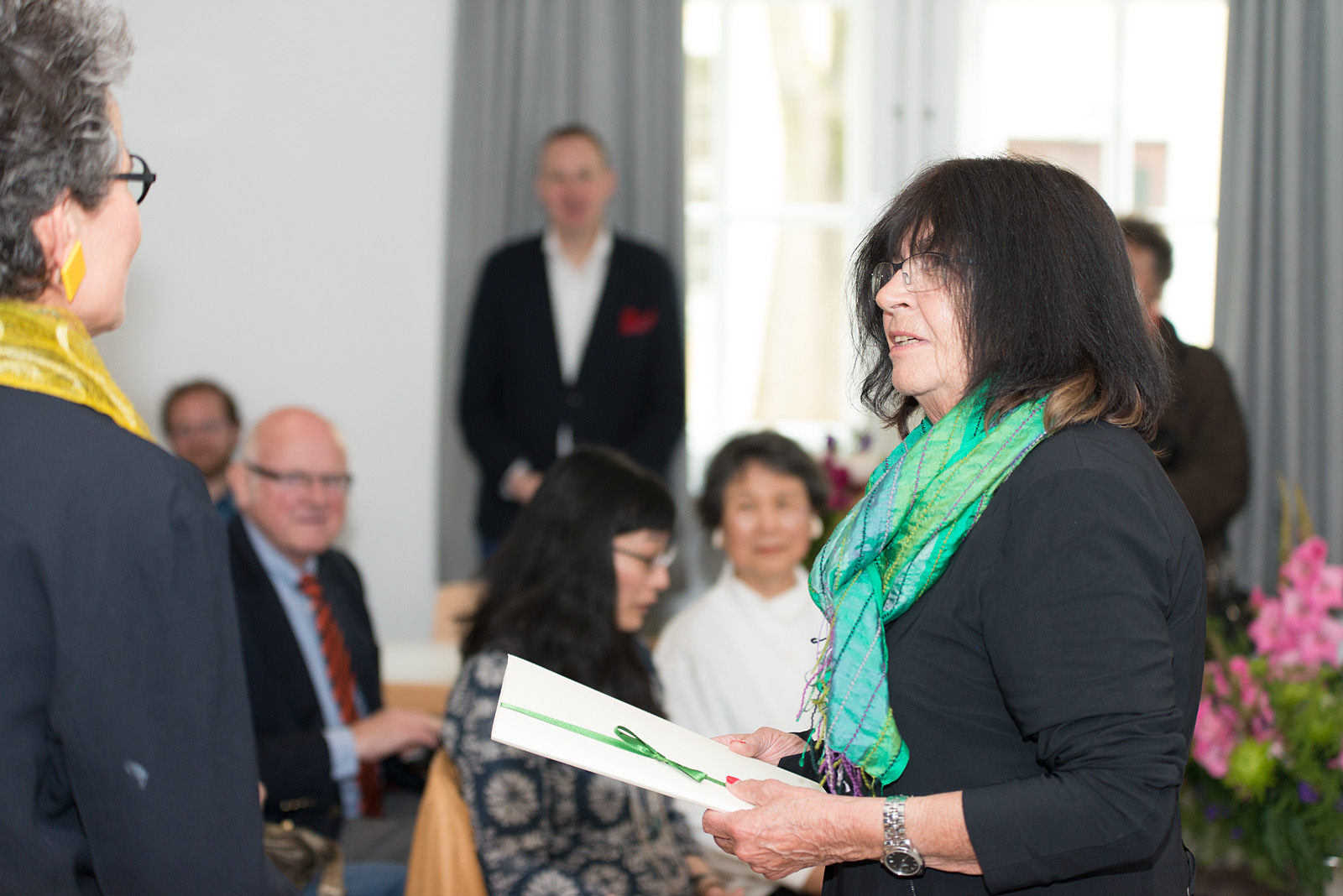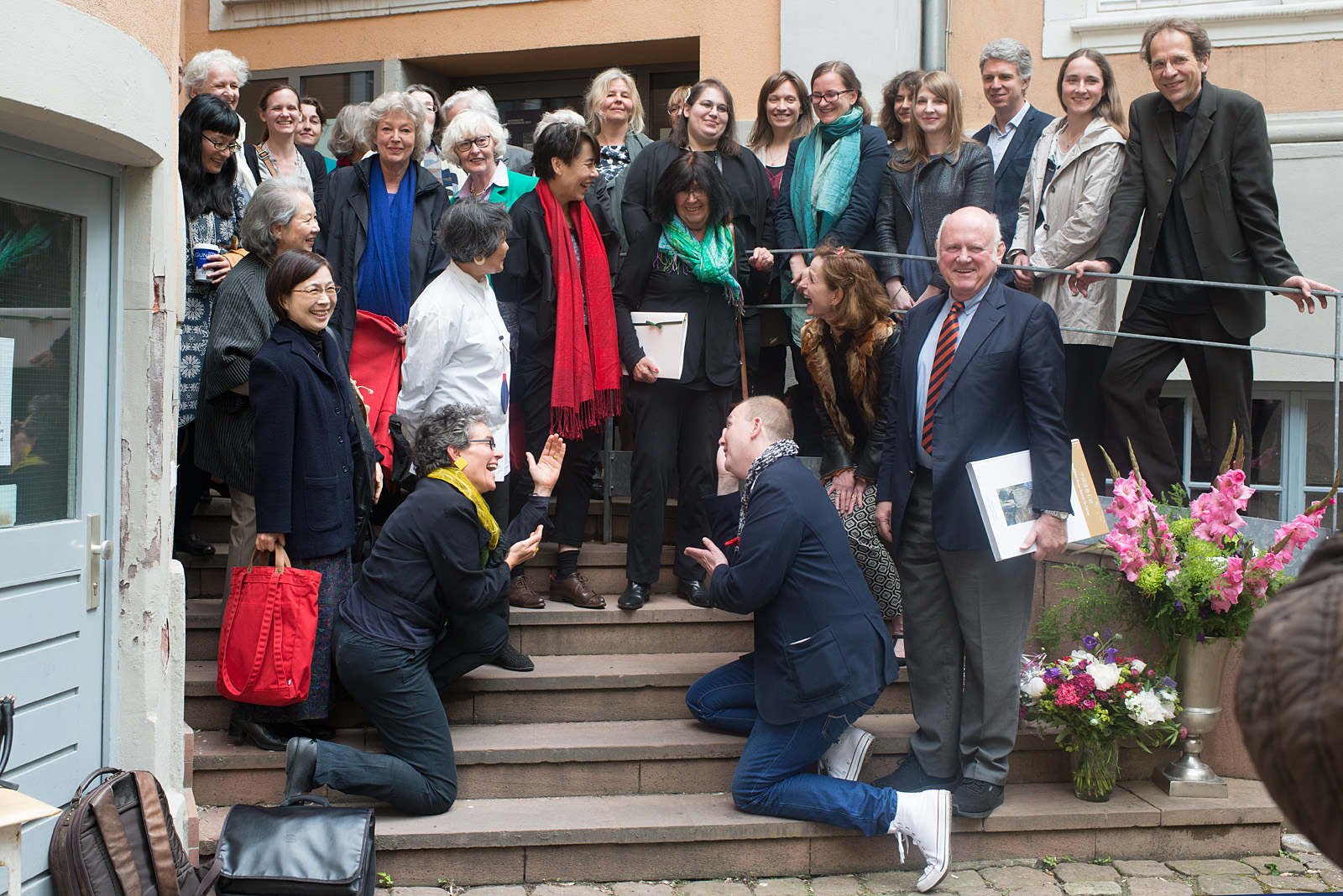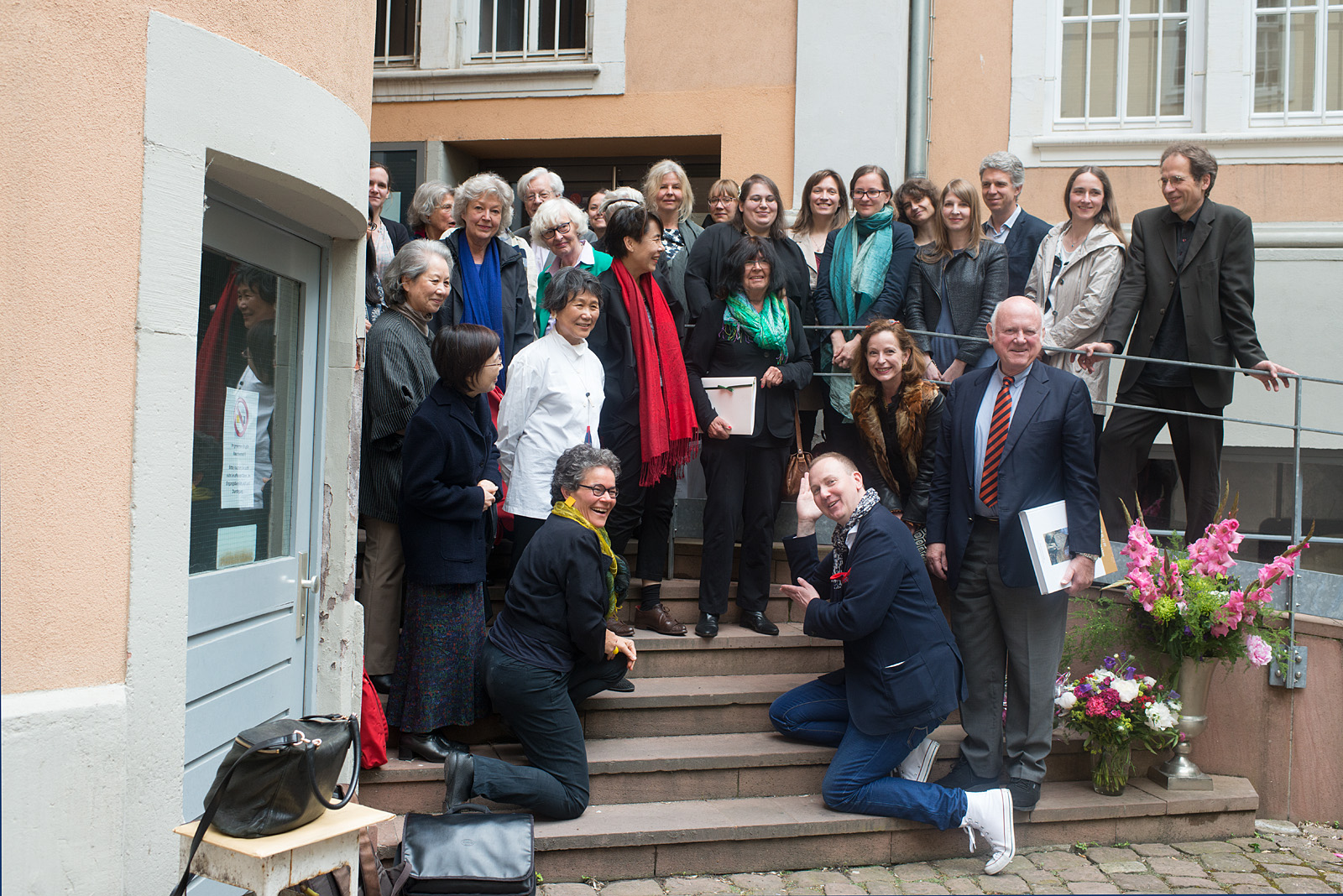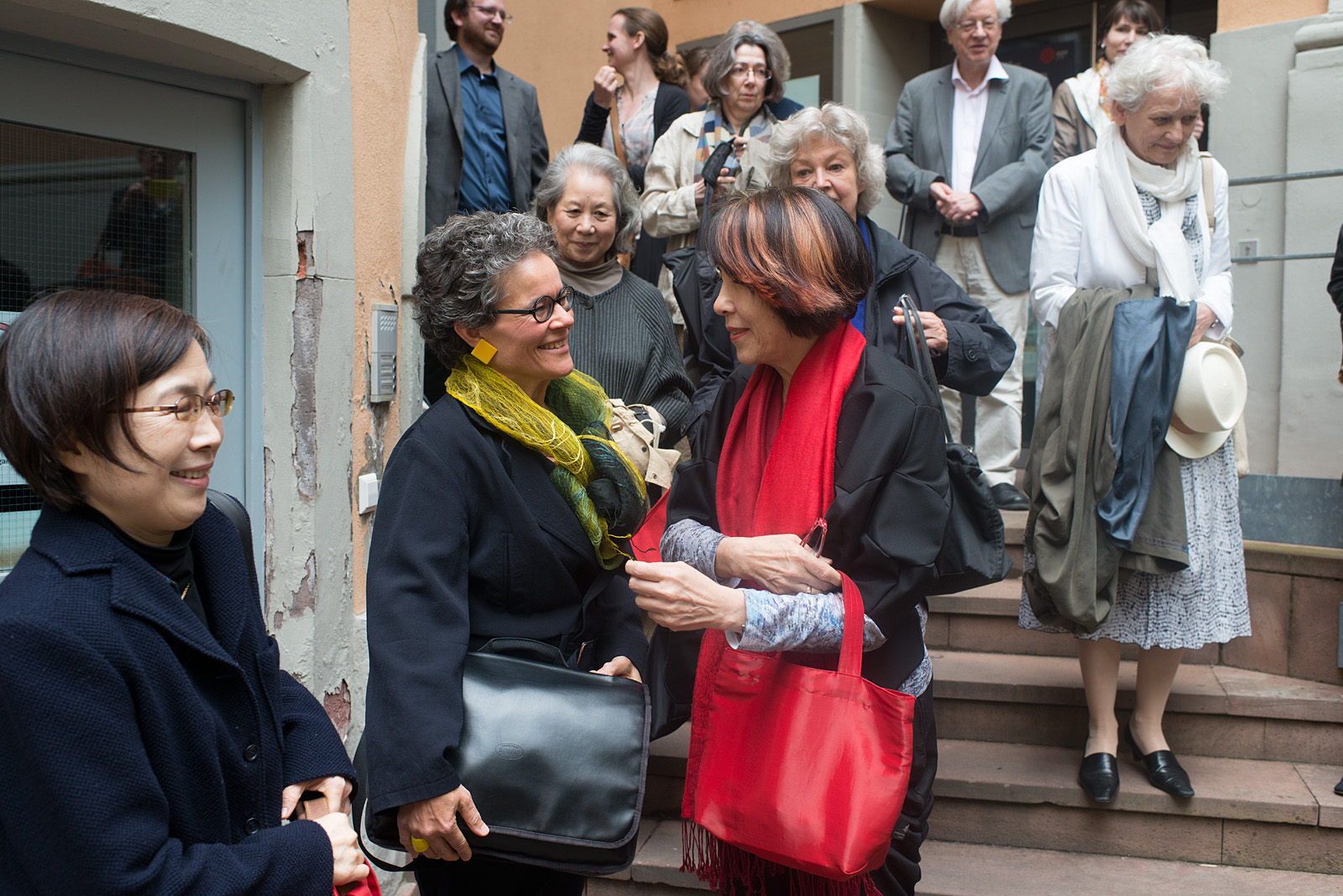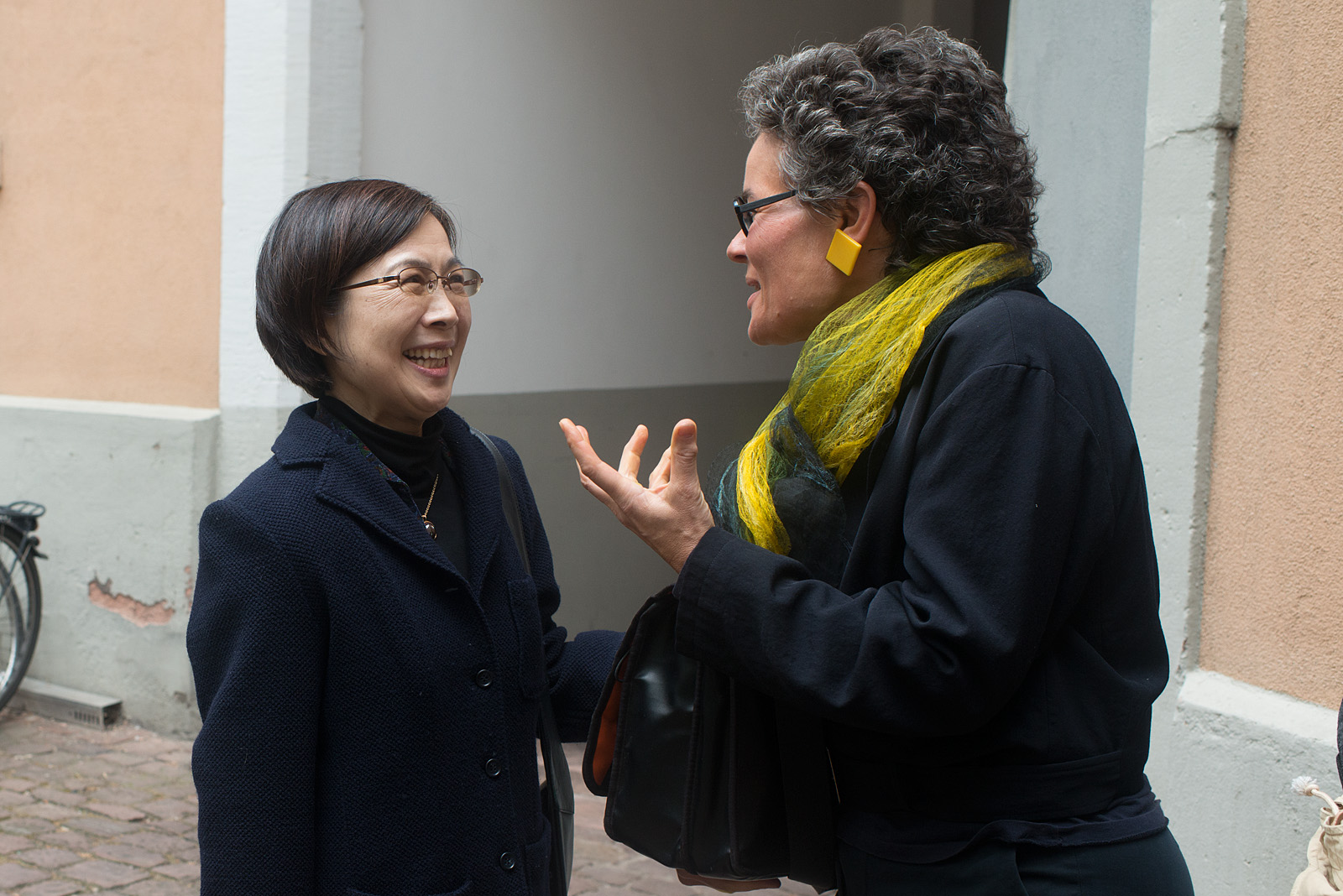Four Times Twenty – In Honour of Doris Croissant
FOUR TIMES TWENTY:
The many lives of art historian Doris Croissant
29. / 30. May, 2015
by Melanie Trede, Heidelberg University
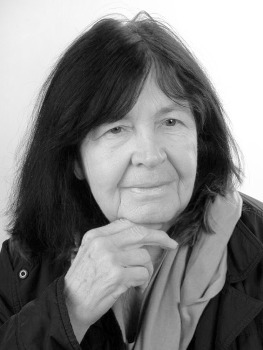
Doris Croissant was born to Hermann Croissant and his wife Trude in Landau. Hermann Croissant was the descendent of an illustrious family of what has been referred to in publications as "Die Pfälzische Künstlerfamilie Croissant" (by Heinz Setzer and Manfred Croissant, Annweiler, 1991). Her father Hermann (1897-1963) was a well-known painter, and her older brother Michael Croissant (1928-2002) was a famous sculptor, whose works are, among others, on display at the Städel in Frankfurt, the Museum Ludwig in Cologne or the Lenbachhaus in Munich.
Doris studied art history at Heidelberg University, with Dietrich Seckel, among others, and at the Free University in Berlin, where she completed her dissertation in 1963, advised by historian of European art, Prof. Hans Kauffmann. Her dissertation analyzed the typological, iconographic and compositional aspects of the Offering Shrines of Wu-liang-tz'u, the famous Shandong stone reliefs of the second century AD. She published the results in German and in Japanese, setting the stage for her future multi-linguistic and multi-cultural publishing activities.
- "Funktion und Wanddekor der Opferschreine von Wu Liang Tz'u 武梁祠: typologische und ikonografische Untersuchungen," Monumenta Serica, Vol. XXIII, 1964: 89-170;
- 「武氏畫象のコムポジション」["Die Szenenkomposition auf den Reliefs von Wu-liang-tz'u"], in: The Representational Art of the Han Dynasty, edited by Toshio Nagahiro, Report of the Research Institute for Humanistic Studies, Kyoto University, Tokyo: Chūō Kōron Bijutsu Shuppan, 1965: 156-171.
She had moved to Berlin from Heidelberg, because her advisor, Dietrich Seckel, was adamant about the necessity of language skills as key to a serious study of East Asian art history. Until 1962, Heidelberg University provided no chair in Chinese studies and offered no language classes either, let alone Japanese studies, which was established only by 1985.
As soon as she had completed her PhD, she conducted research in Japan for three years funded by a scholarship from the German Academic Exchange Service (DAAD). Her first advisor was Prof. NAGAHIRO Toshio at the Research Institute for Humanistic Studies, Kyoto University, whom she referred to in her Sōtatsu book (see below) as mentor and friend. But somehow she was drawn more forcefully to the arts of Japan, moved to Tokyo to study with Prof. Yamane Yūzō, because she was interested in the early seventeenth-century enigmatic painter Sōtatsu and his studio, and Prof. Yamane was the doyen of Rinpa painting.
It was then that she met KŌNO Motoaki, later professor for Japanese art history at Tokyo University, who visited and taught in Heidelberg on several occasions in the 1980s. He recalled a particular instance in the summer of 1965. The graduate students were going on a fieldtrip to the Kansai area under the stern supervision of Prof. Yamane. Kōno Motoaki was at that time interested in nothing but the Northern Renaissance. Nonetheless he was assigned to give a presentation on the architectural style of the Golden Hall at Tōshōdaiji Temple in Nara. Nothing was more remote from his interests than this assignment. But once he had delivered his presentation, mightily relieved, Doris secretly bought a bottle of sake, returned to the hostel, and offered the relaxing liquid to him, fellow students and the professors alike with an emphatic ‘gokurōsama!’ ("Well done!" / "Congratulations!").
This was an unprecedented and unequaled move by a foreign – female – scholar, who easily crossed gender and hierarchical borders. This moment forever engraved her affectionate generosity in Prof. Kono's mind – and not only his.
Meanwhile, in the same year 1965, Dietrich Seckel was offered the first chair in the field of East Asian art history at Heidelberg University. In fact it is the fiftieth anniversary this year 2015 of the establishment of the discipline of East Asian art history in postwar Germany and of its chair at Heidelberg University.
Given the choice between a secretary and an assistant professor, Prof. Seckel wisely opted for the latter. Unsurprisingly, he chose Dr. Doris Croissant as the very first assistant professor of East Asian Art History in Germany. As of 1966, she helped build the field of East-Asian Art History with a focus on the history of Japanese art in Heidelberg and in Germany at large. The earliest class she taught, which is registered in the university's course catalogue, dates to the winter semester 1968-1969. While colleagues would title their seminars, ‘Hans Holbein, the Younger’ or "Portraits of Roman Emperors" hers revealed a focused, critical approach: "Problems of Japanese paintings, 16th to 17th centuries."
As soon as she was able to garner a substantial scholarship by the German Research Foundation, she developed her habilitation project on Sōtatsu as a research fellow at Harvard University (advised by John Rosenfield) in 1970-71, followed by another two years at Kyoto University. At Harvard, our colleague Christine Guth met her, and in recollecting the encounter, she wrote in an email:
"I remember first meeting her ... when I was a graduate student and she was a visiting scholar at Harvard. She talked to me about her work on Sōtatsu, and I was really impressed because she was challenging the canonical literature and interpretation.... It was not something that JR encouraged -- and I remember thinking how intellectually fearless she was...and is!"
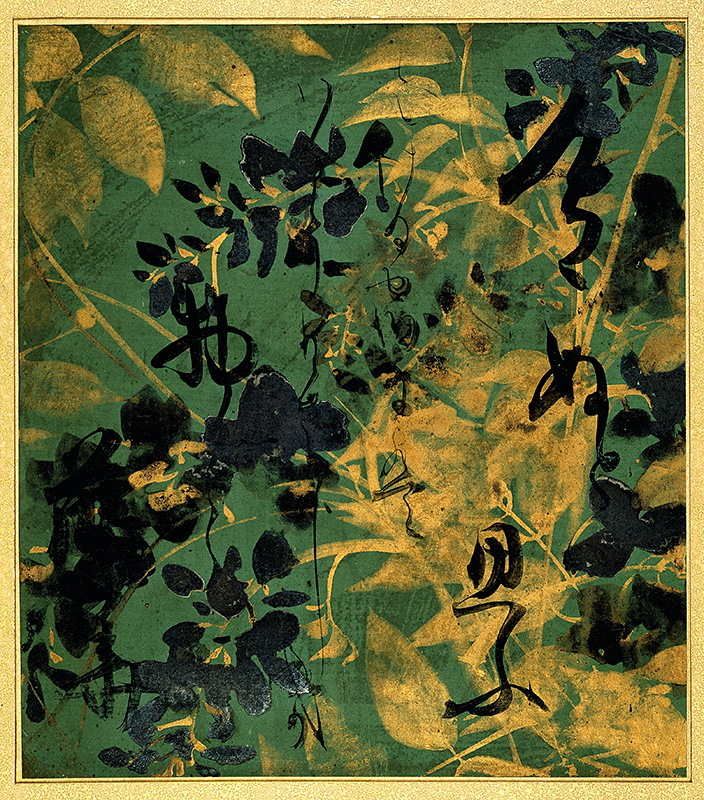
And indeed, in her second book, she challenged notions such as the Yamatoe-revival or the term "renaissance" in relation to Sōtatsu’s paintings as a blatant and unproductive parallelism to European art history. She reveals not only that these categorizations go back to eighteenth- and nineteenth-century Japanese adaptations of Chinese art criticism. More importantly, the idea of a renaissance in Sōtatsu's and his studio's paintings disregards the dominant wa-kan (Japan-China) dichotomy in seventeenth-century Japanese painting. Additionally and importantly, it was Doris Croissant who drew attention to the importance of Sōtatsu’s patrons in the choice of subject matter, an approach which was much later followed-up by colleagues NAKAMACHI Keiko and TAMAMUSHI Satoko. The path-breaking book on Sōtatsu and the Sōtatsu Style resulted in her habilitation at Heidelberg University in 1974.
Doris Croissant was not only the first woman to receive a habilitation in the field of East Asian art history, but also the first who accomplished this after a thorough academic training in this field, unlike the lay education of the great foundational figures Otto Kümmel and Dietrich Seckel.
In the same year 1974, after having attained the highest academic grade, she received a grant from the Volkswagen Foundation and returned to Japan with a new project. Her new research topic was the adaptation of European painting in the Meiji period, and the art theoretical debates involved in the process. The series of articles on the yōga / nihonga dichotomy, on realism and portraiture, on Ernest Francisco Fenollosa’s art theories, and on TAKAHASHI Yuichi's as well as KANO Hōgai’s paintings published in the following decades in German, Japanese and English paved the way for a critical history of modern Japanese art. Because up until well into the 1990s the rather conservative discipline of Japanese art history stopped short of tackling Meiji period art at universities, in and outside of Japan.
On the invitation of the cultural historian YOSHIDA Mitsukuni (1921-1991) she joined a workshop at the Kyoto Research Institute of Humanistic Studies from 1981 to 1982, which furthered her interests in the connection between portraiture, concepts of realism, and photography in modernizing Japan.
- “Die Auseinandersetzung zwischen Nihon-ga und Yōga in Theorie und Praxis. Betrachtungen zur Malerei der Meiji-Zeit.“ In: Asiatische Studien/Etudes Asiatiques, vol. 31,1, 1977: 5-30.
- “Meiji shoki Yōga no shōzō-ga rearisumu ni tsuite- Takahashi Yuichi wo chūshin ni.“ (The concept of realism in portraiture of early Western style painting - Yōga - in Japan). Jinbun Gakuhō 53, March 1982: 157-187.
- “Fenollosas ‚Wahre Theorie der Kunst’ und ihre Wirkung in der Meiji-Zeit (1868-1912).“ Saeculum XXXVIII, Heft 1, 1987: 52-75.
- “Der unsterbliche Leib. Ahneneffigies und Reliquienporträt in der Porträtplastik Ostasiens.“ In: Das Bildnis in der Kunst des Orients, edited by Martin Kraatz, Jürg Meyer zur Capellen, Dietrich Seckel. Stuttgart: Franz Steiner Verlag, 1990: 235-268.
- “Takahashi Yuichi (1828-1894): Depiction of Reality and Documentation of Progress.” In: Künstlerischer Austausch - Artistic Exchange (Akten des XXVIII. Internationalen Kongresses für Kunstgeschichte Berlin 15.-20. Juli 1992), edited by Thomas W. Gaehtgens, 3 vols., Berlin: Akademie Verlag, 1993, Vol. 1: 627-640.
- “In Quest of the Real: Portrayal and Photography in Japanese Painting Theory.” In: Challenging Past and Present. The Metamorphosis of Japanese Art in the Nineteenth Century, edited by Ellen P. Conant. Honolulu: University of Hawai’i Press, 2006: 153-176.
Another milestone in this respect was the monumental exhibition catalogue “Japan and Europe, 1542-1929”, co-edited with Lothar Ledderose in 1993. Many of us took part in this life-shaping project, which integrated nanban, ranga and yōga paintings along with hundreds of other subject matters and materialities. Importantly, the exhibition visually demonstrated the fallacy of the classic trope of Japan as a closed country during the Edo period.
At the same time, Doris Croissant was heavily involved in doing fundamental research on museum collections of Japanese paintings. With Misako Wakabayashi she wrote the magisterial two-volume Japanese catalogue (later published in an English version as well) on the Collection of paintings put together by the Meiji emperor’s medical doctor Erwin Baelz, which is kept at the Linden Museum in Stuttgart. Most paintings stem from the eighteenth and nineteenth century, and were created by rather obscure painters, which now experience a new interest in Japanese art history. She also edited the first substantial catalogue in English on the Japanese painting collection in the Cologne Museum of East Asian Art, many of which were acquired by museum founders Adolf and Frieda Fischer around 1900. The book served also as a catalogue for the exhibition Splendid Impressions in 2011, celebrating the "150 Years of German-Japanese Relations."
- Doris Croissant/Misako Wakabayashi, Japanese Paintings in the Baelz Collection. The Linden Museum Stuttgart. 2 vols. (Japanese version), Tōkyō: Kodansha, 1991.
- Doris Croissant/ Misako Wakabayashi, Japanese Paintings in the Baelz Collection. The Linden Museum Stuttgart, ed., 2 vols. 1998.
- Doris Croissant, ed., Splendid Impressions. Japanese Secular Paintings 1400-1900 in the Museum of East Asian Art, Cologne. Leiden: Hotei Publishing, 2011.
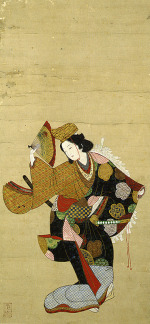
Apart from the two main areas of expertise, the Rinpa painting school and the Japanese adaptation process of European art and visual media, she engaged with new fields, methodologies and media since the 1990s. Among them were gender studies in art history, story manga, and the formation of collections and museums of East Asian art in Germany around 1900. Most recent is a forthcoming article on myths of artists in East Asia and Europe (in: Kunstgeschichte der Vier Erdteile/Art History of the Four Continents, edited by Ulrich Pfisterer und Matteo Burioni, Darmstadt: Wissenschaftliche Buchgesellschaft, 2015), another one on an enigmatic painting by the "eccentric" painter Jakuchû and on and on.
***
The worldwide enthusiastic responses to her celebration on May 26 bespeak her stature as a doyenne and pioneer in a number of fields within Japanese art histories. Her productive intellectual engagement with myriad subjects, rigorous methodologies and a superior command over just everything that's been written on the topics she is working on has shaped the minds of art historians in Europe, the US, and Japan.
Her teaching was occasionally an enigma, oftentimes a challenge, and always a revelation. The density of her arguments and sophisticated diction was not always easy to follow, but there were few who didn't try to go into the matter and attempted to live up to her standards; and some, as our dear colleague, Dr. Alexander Hofmann, decided upon attending her famous Rinpa lecture in the winter semester 1990-1991 to take up Japanese art history — ultimately as a breadwinning profession.
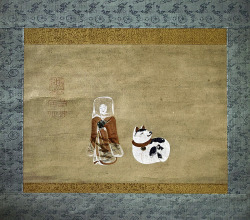
In seminars, she was regularly so much better prepared than we students (how frustrating!) with pertinent materials and sources in her hands — who knew where she found those! —, which she used to provoke us to think further. She relentlessly pointed out the weaknesses of our arguments, and thereby opened windows to new horizons, which we had never dreamt, let alone thought of.
As much as we were in awe, she charmed and keeps charming her students and colleagues alike with her warmth and welcoming hospitality, her modesty and enormous intellectual as well as personal generosity, and not least with her very special sense of a sometimes dark humor.
We hope for many more occasions full of stimulating intellectual exchanges, challenging debates and full-throated laughter with you in the midst of students, colleagues and visiting professors — We wish you: ‘many more times twenty’!
Images:
Hon’ami Kōetsu (1558-1637, calligraphy) and Tawaraya Sōtatsu (? – ca. 1643?, designs): Poems from Shin-Kokinshū. Set of 36 leaves, ink, gold and silver on paper, 18.3 x 16.2 cm each. Tokugawa period, 1st half 17th c. © Staatliche Museen zu Berlin, Stiftung Preußischer Kulturbesitz – Museum für Asiatische Kunst, photography: Jürgen Liepe. | Ukiyo Masatoshi (fl. 1655-1674): Wakashu Dancer (Narihira odori), Hanging scroll (framed), color, gold and silver on paper, 57.5 x 27.5 cm. Kanbun era (1661-1673). © Museum of East Asian Art, Cologne, Sign.: A 238. | Itō Jakuchū: Woman with cat (Fushimi Ningyō), color and gofun on paper, 28 x 41 cm, 2 Seals: Tō Jokin in, 3.4 x 2.9 cm, Jakuchū koji, diameter 4.6 cm, Edo period, Private collection, Heidelberg, photography: Lukas Ledderose.
Programme 29. / 30. May, 2015
Photo gallery
© Susann Henker, Institut für Kunstgeschichte Ostasiens



 PROGRAMME
PROGRAMME